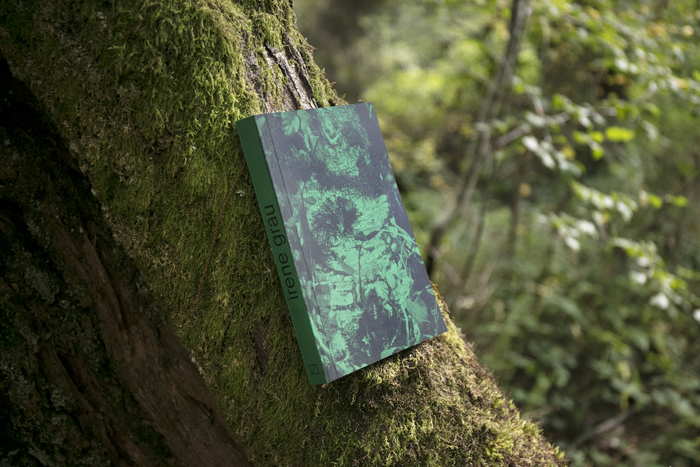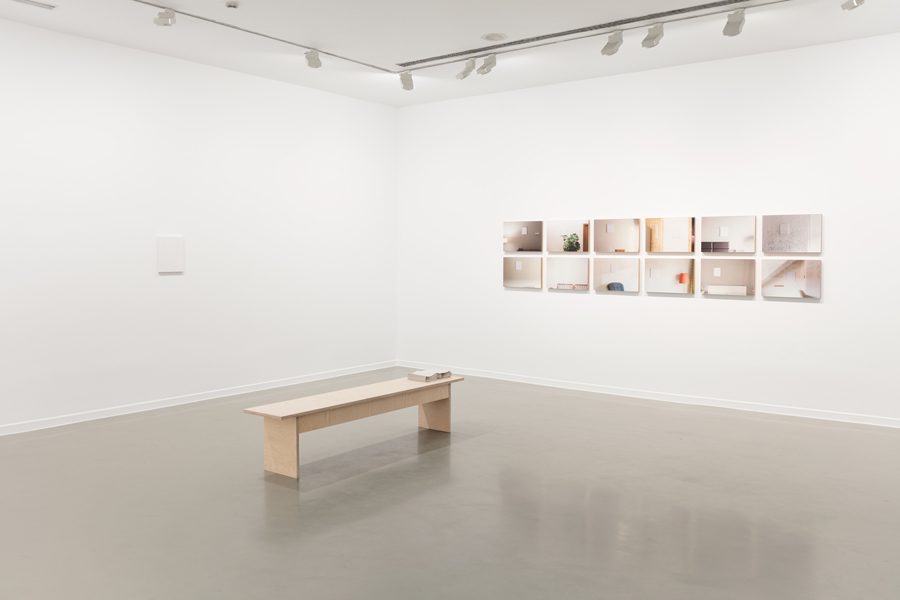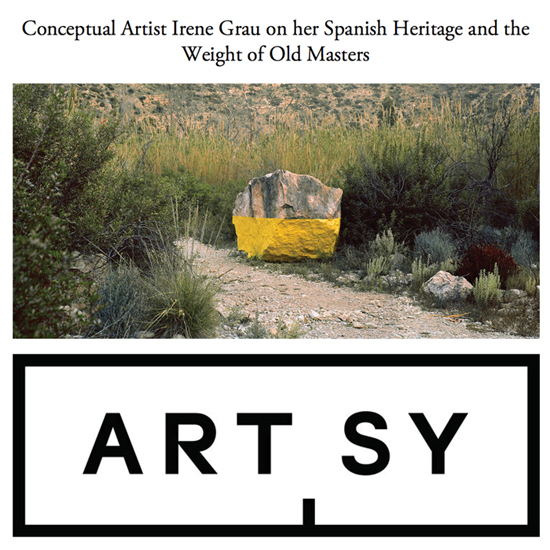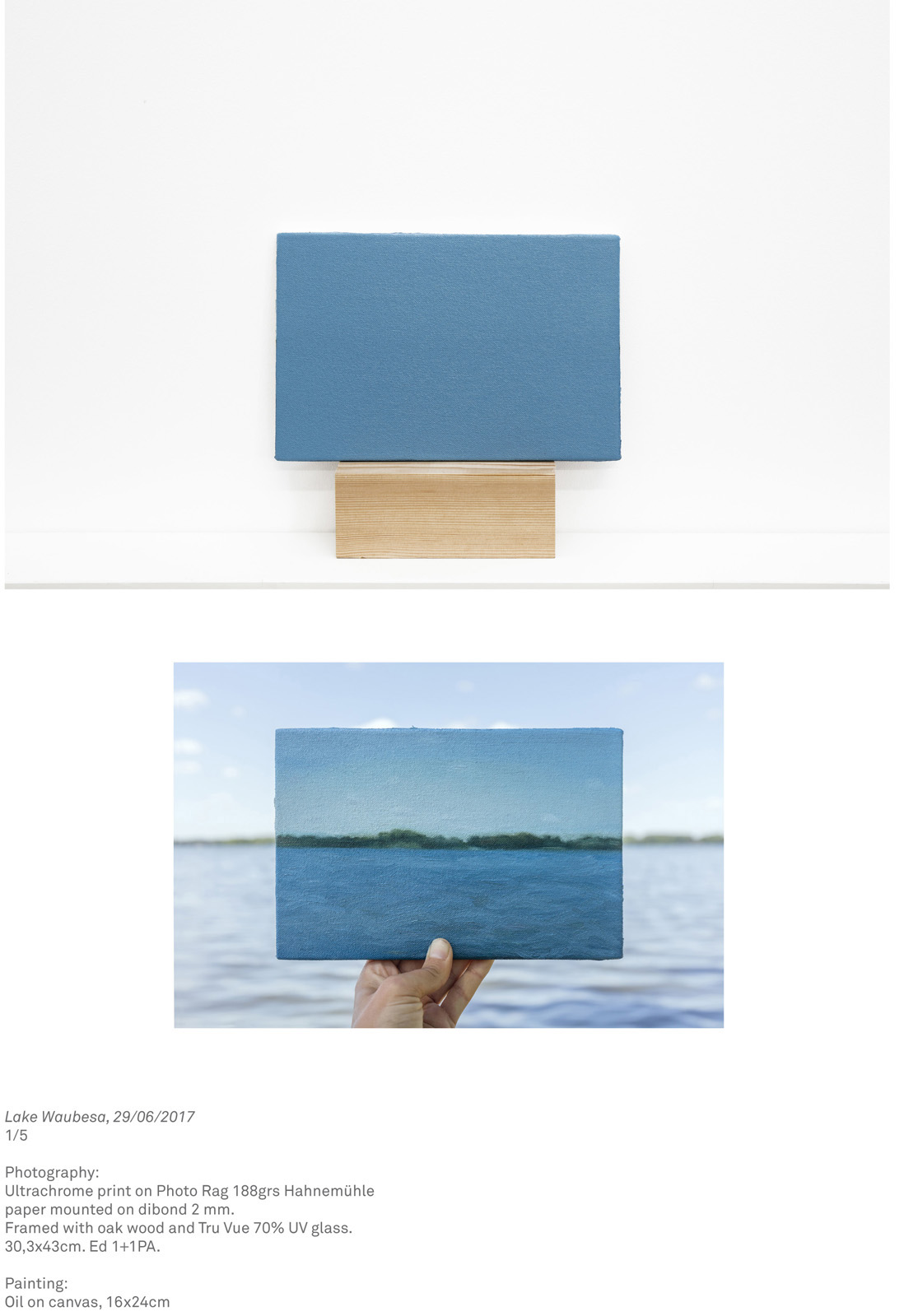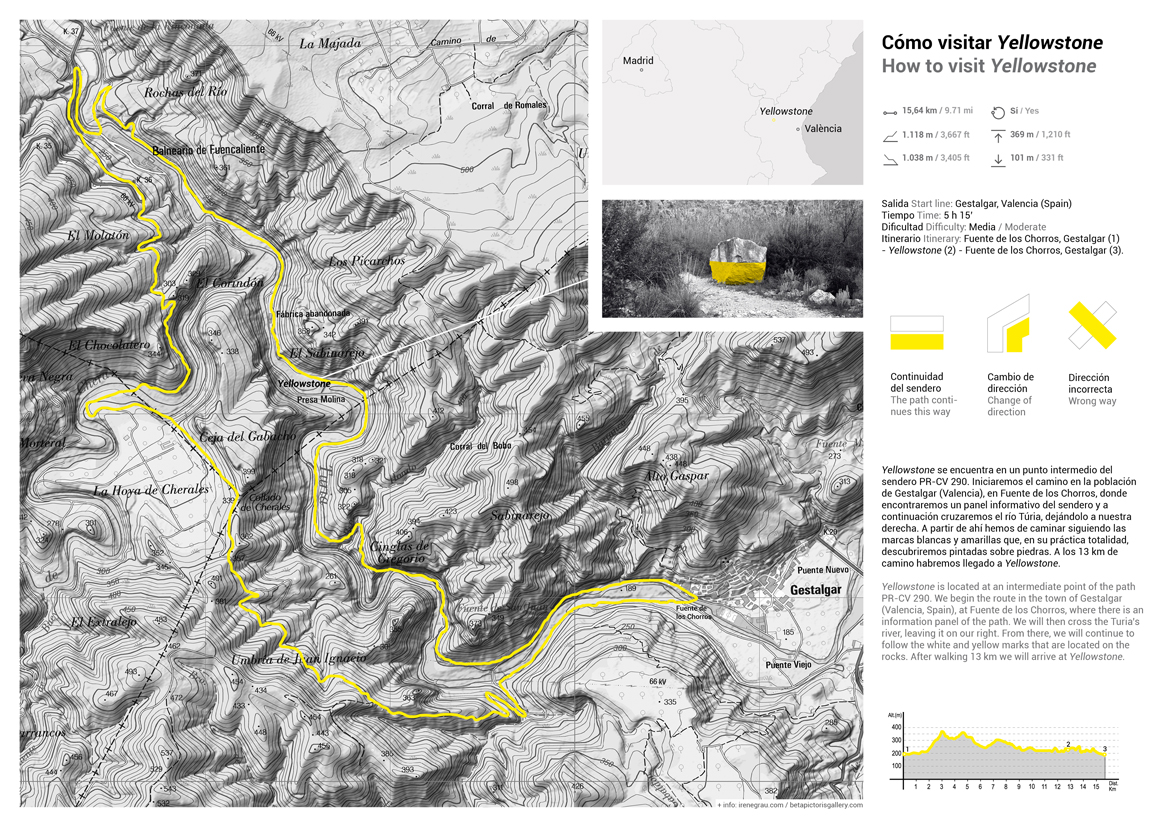Maus Contemporary
IRENE GRAU
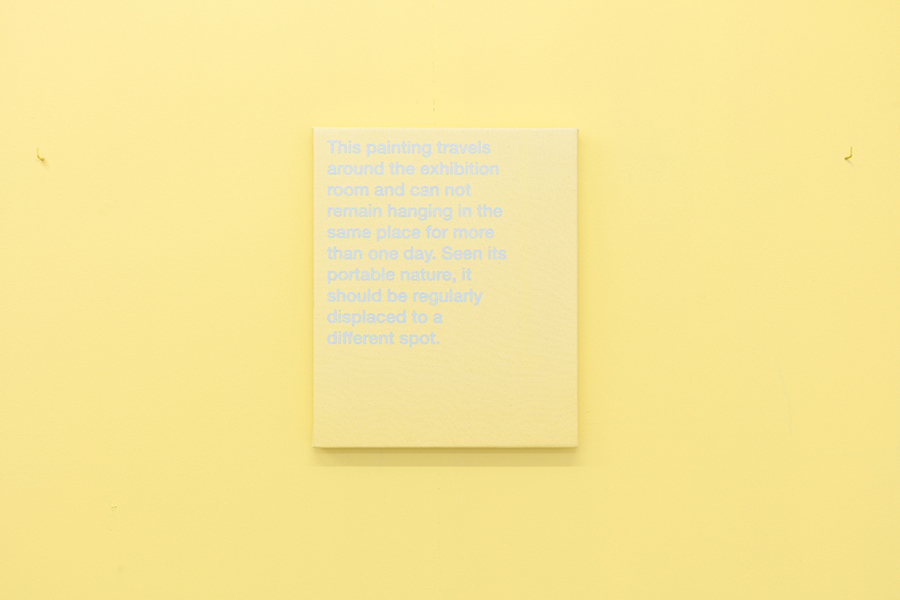 Irene Grau "traveling exhibition", 2021, 46 by 38 cm (approx. 18.10 by 15 in.)
Irene Grau "traveling exhibition", 2021, 46 by 38 cm (approx. 18.10 by 15 in.)
traveling exhibition
2021
oil and lacquer on stretched canvas, wall paint, metal hooks, installation instructions
dims variable - painting: 46 by 38 cm (18.1 by 15 in.)
private US collection
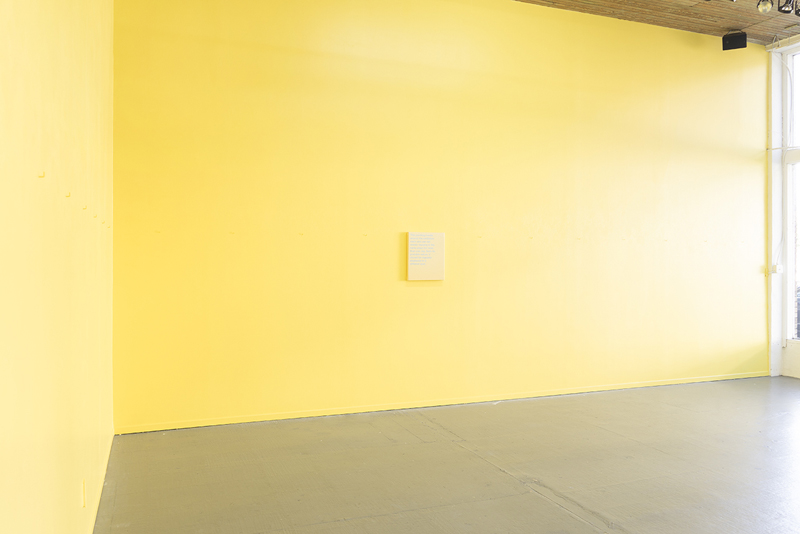
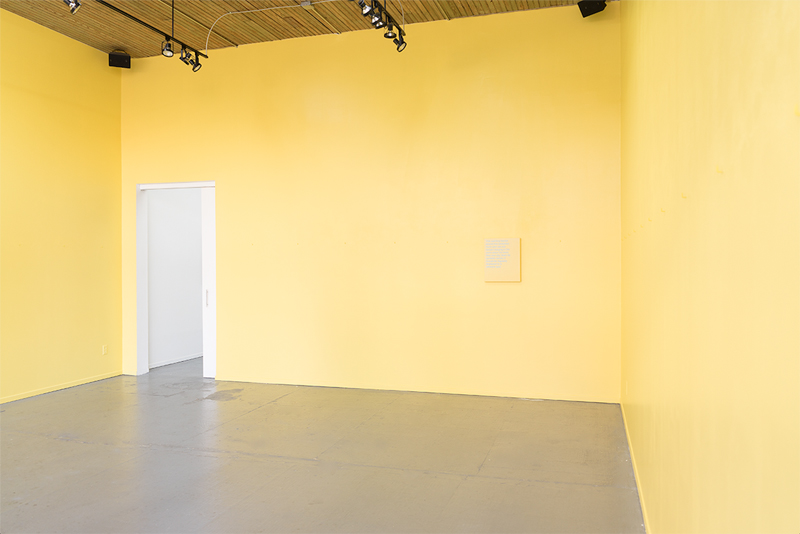
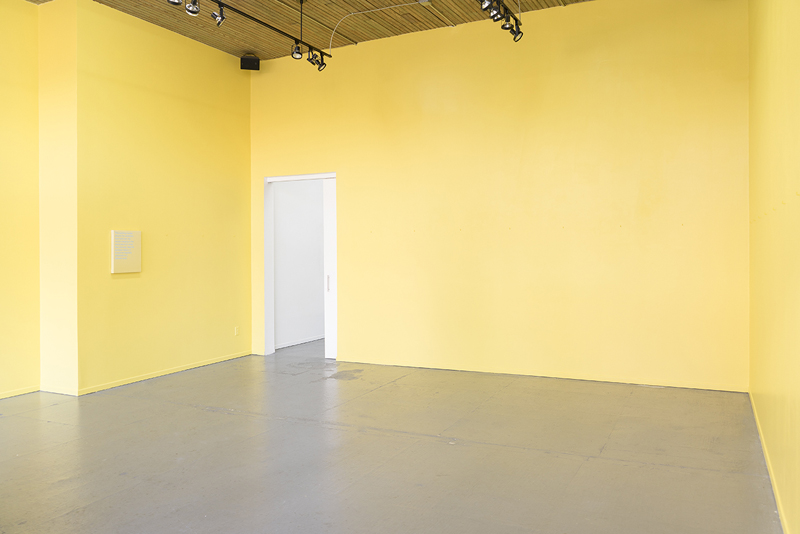
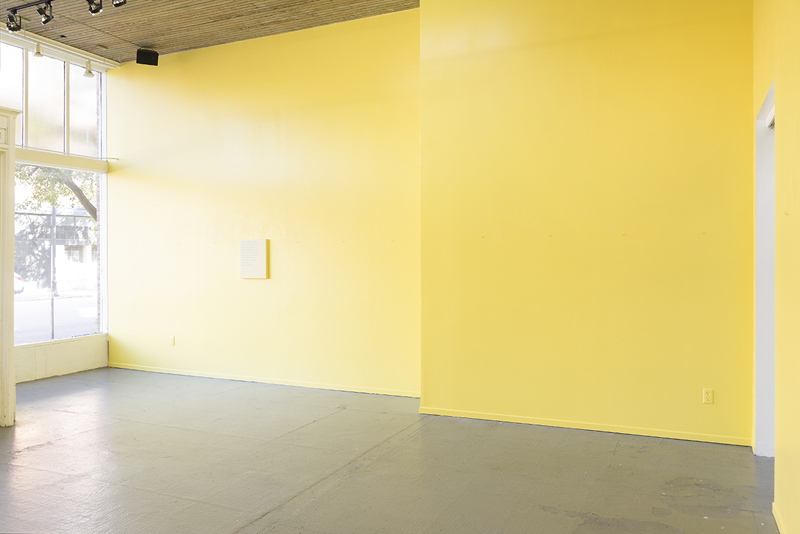
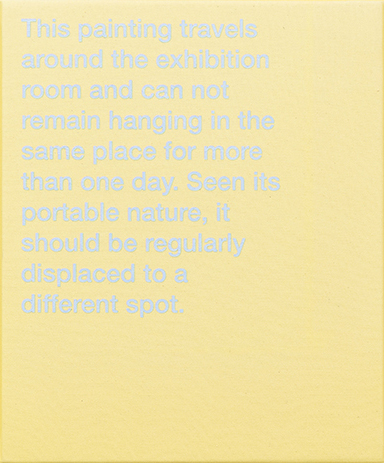 Irene Grau "traveling exhibition", 2021, 46 by 38 cm (approx. 18.10 by 15 in.)
Irene Grau "traveling exhibition", 2021, 46 by 38 cm (approx. 18.10 by 15 in.)
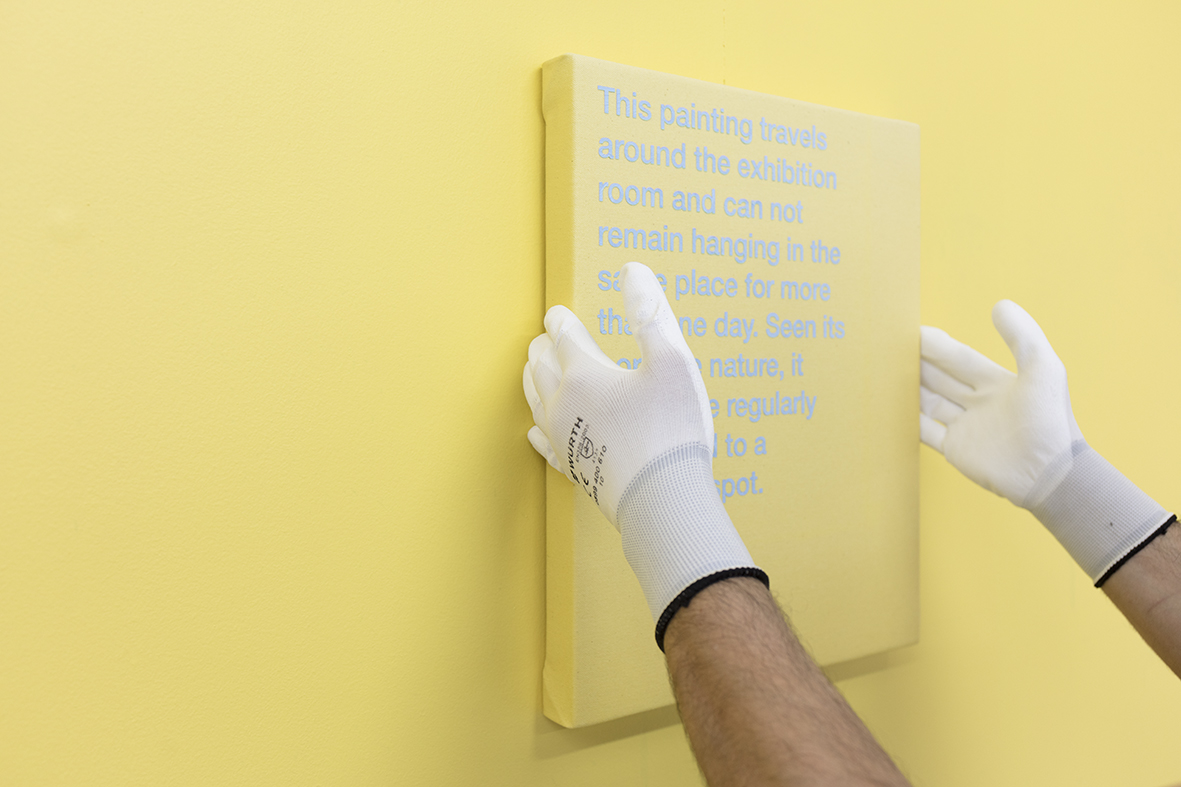

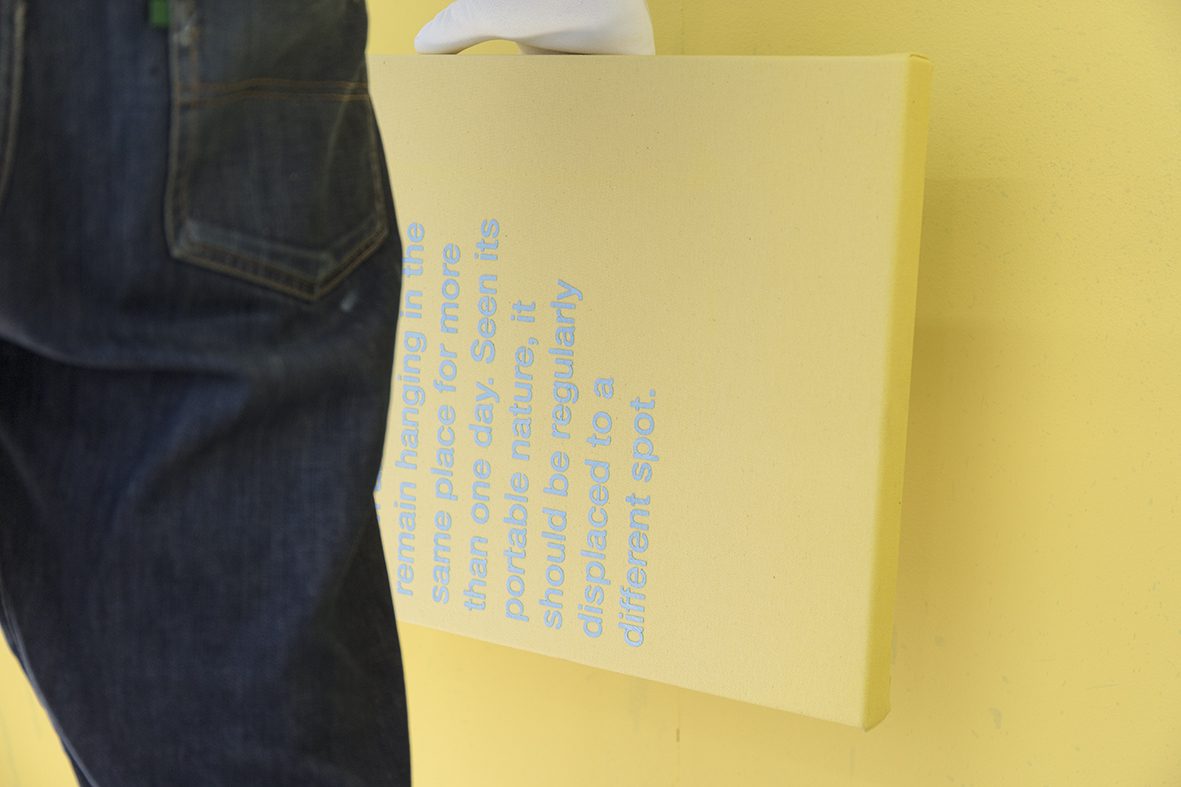

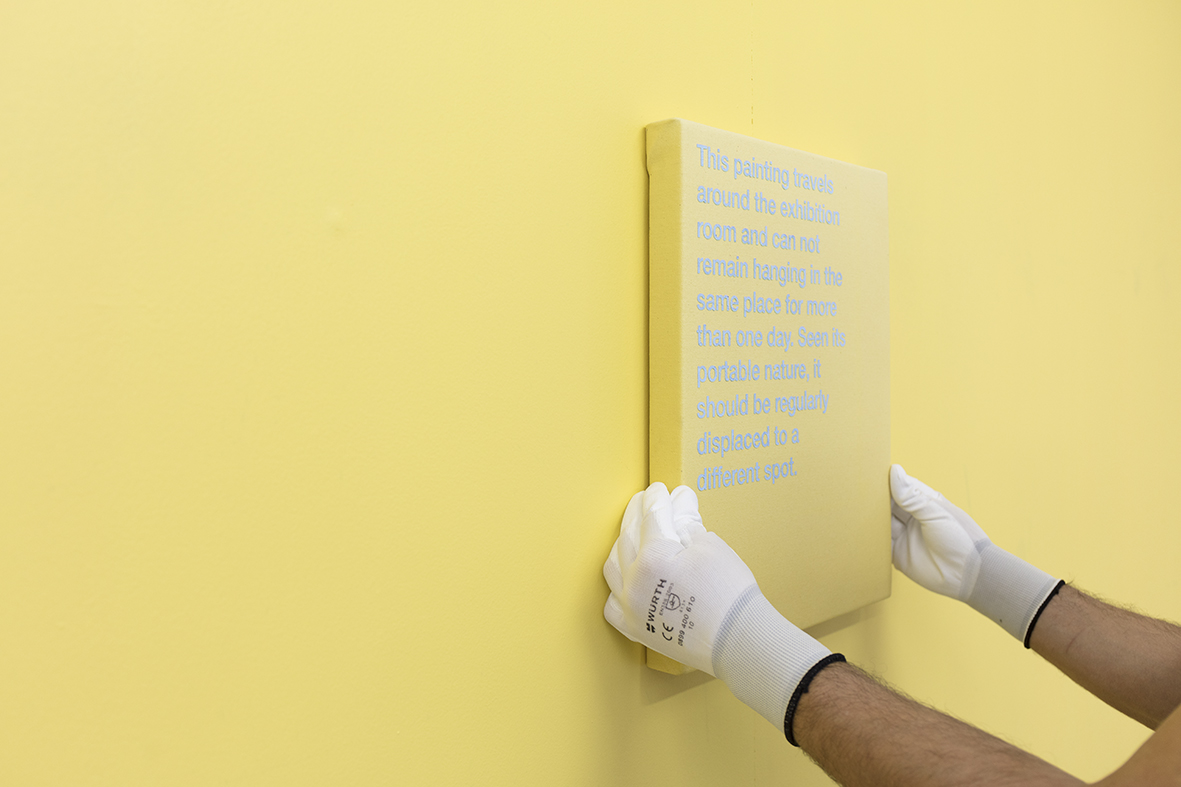
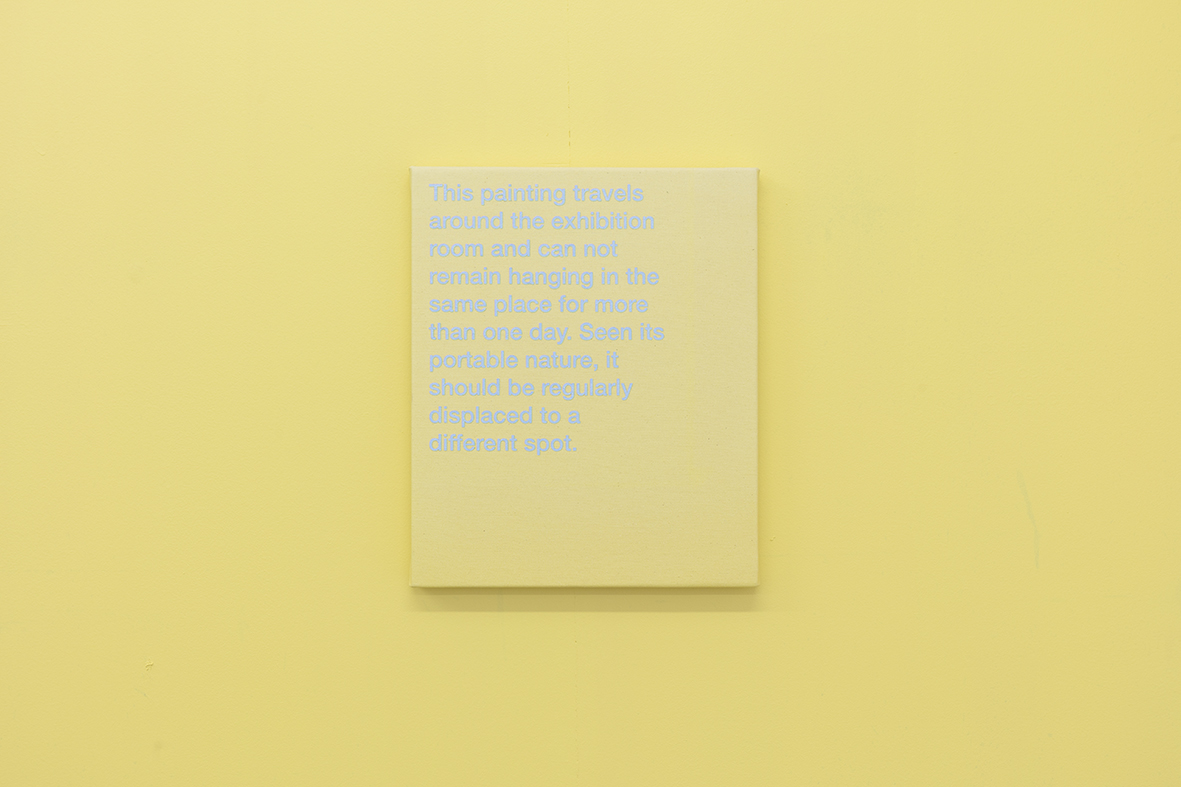
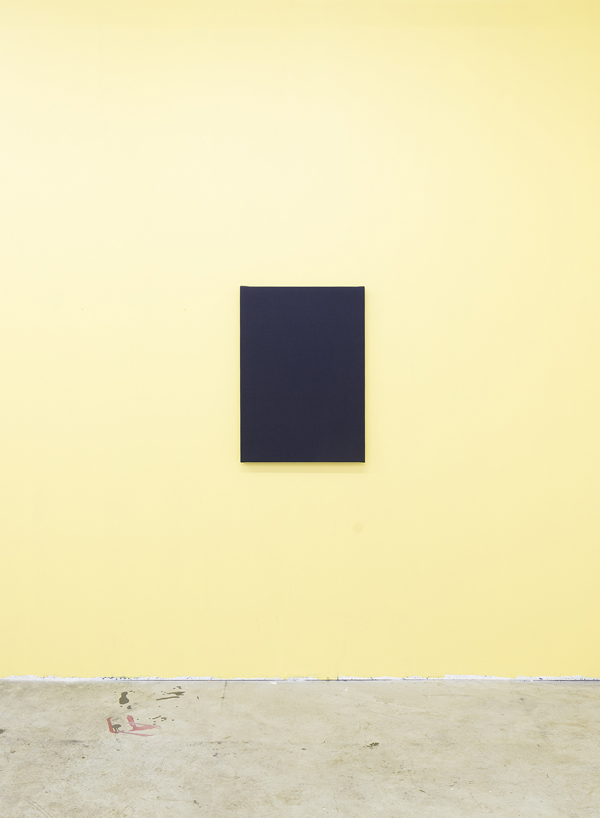 Irene Grau "frames afford some protection", 2021, 76 by 54 cm (approx. 29.8 by 21.25 in.)
Irene Grau "frames afford some protection", 2021, 76 by 54 cm (approx. 29.8 by 21.25 in.)
frames afford some protection
2021
oil and lacquer on canvas
76 by 54 cm (29.8 by 21.25 in.)
private US collection
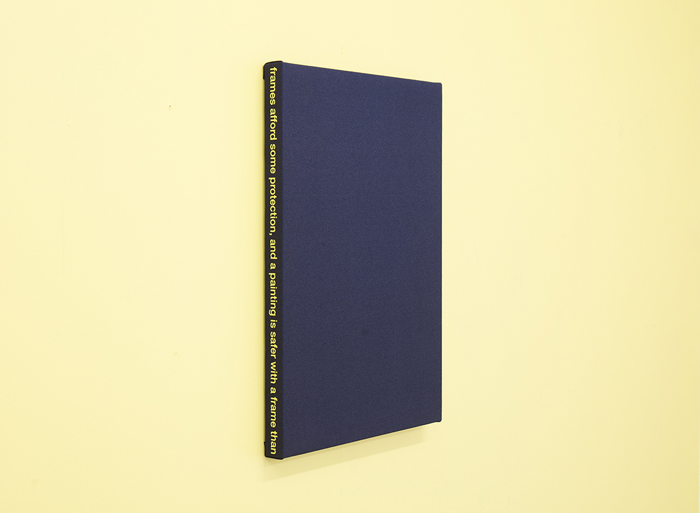 Irene Grau "frames afford some protection", 2021, 76 by 54 cm (approx. 29.8 by 21.25 in.)
Irene Grau "frames afford some protection", 2021, 76 by 54 cm (approx. 29.8 by 21.25 in.)
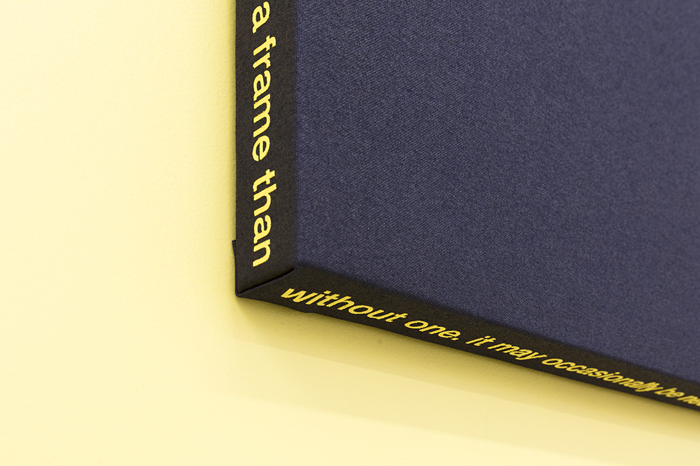 Irene Grau "frames afford some protection" (detail)
Irene Grau "frames afford some protection" (detail)
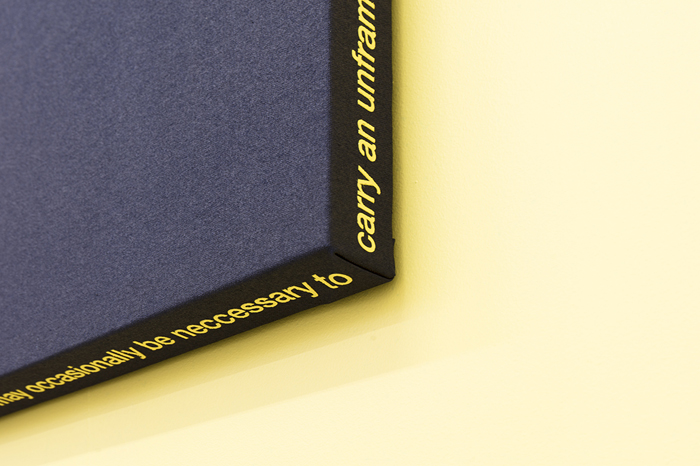 Irene Grau "frames afford some protection" (detail)
Irene Grau "frames afford some protection" (detail)
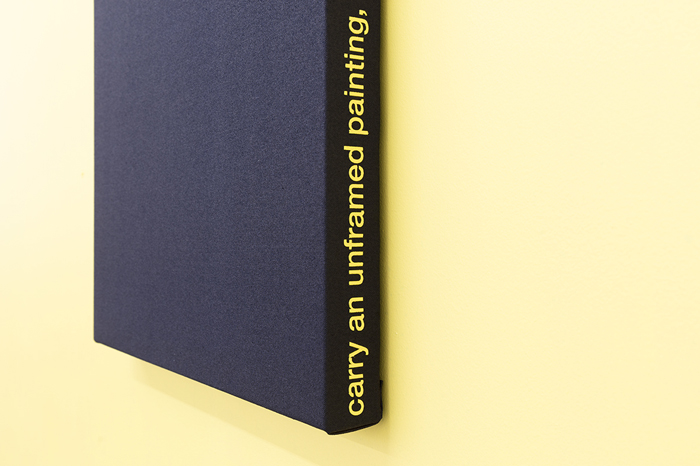 Irene Grau "frames afford some protection" (detail)
Irene Grau "frames afford some protection" (detail)
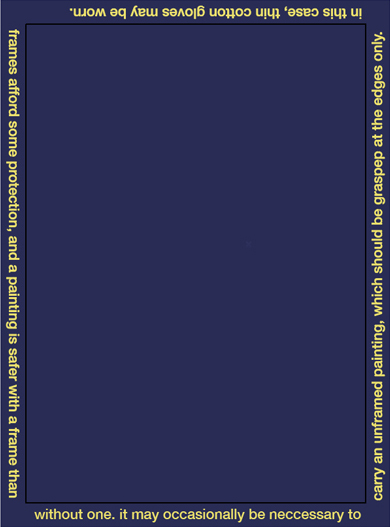 Irene Grau "frames afford some protection" (digital rendering)
Irene Grau "frames afford some protection" (digital rendering)
frames afford some protection and a painting is safer with a frame than
without one. it may occasionally be necessary to
carry an unframed painting which should be grasped at the edges only.
in this case, thin cotton gloves may be worn.
 Irene Grau "Sobre no tomar decisiones" painting and photograph, 2019
Irene Grau "Sobre no tomar decisiones" painting and photograph, 2019
Sobre no tomar decisiones
(On not making decisions)
unique work comprised of one painting and one framed photograph
2019
painting: acrylic and enamel on canvas
painting: 130 by 130 cm (51.2 by 51.2 in.)
photograph: UltraChrome on Ilford Galerie Smooth paper,
mounted on dibond and methacrylate
#1/1 of an edition of 1
photograph: 21 by 15 cm (8.25 by 5.9 in.) - framed dims 22,3 by 16,3 cm (8.75 by 6.4 in.)
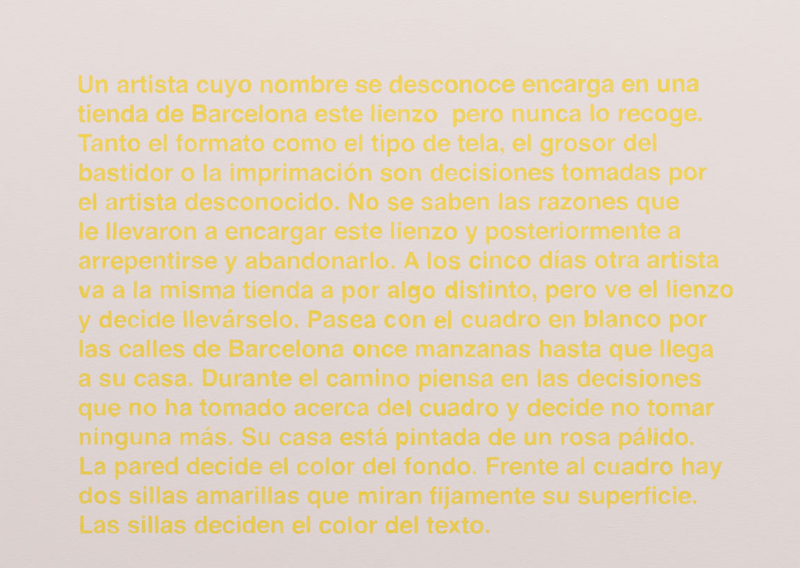 Irene Grau "Sobre no tomar decisiones" painting (detail), 2019
Irene Grau "Sobre no tomar decisiones" painting (detail), 2019
Un artista cuyo nombre se desconoce encarga en una tienda de Barcelona esta lienzo pero nunce le recoge. Tanto el formato como el tipo de tela, el grosor del bastidor o la imprimacíon son decisiones tomadas por el artista desconocido. No se sabel los razones que le llevaron a encargar este lienzo y posteriormente a arrepentirse y abandonario. A los cinco dias otra artista va a la misma tienda a por algo distinto, pero va el lienzo y decide llevárselo. Pasea con el cuadro en bianco por las calles de Barcelona once manzanas hasta que llega a su casa. Durante el camino piensa en las decisiones que no ha tomado acerca del cuadro y decide no tomar ninguna más. Su casa está pintada de un rosa pálido. La pared decide el color del fondo. Frente al cuadro hay dos sillas amarillas que miran fijamente su superficie. Las sillas deciden el color del texto.
An artist whose name is unknown orders this canvas from a shop in Barcelona but never picks it up. Both the format and the type of fabric, the thickness of the frame or the primer are decisions made by the unknown artist. It is not known the reasons that led him to order this canvas and later to repent and abandon it. Five days later, another artist goes to the same store for something different, but she goes to the canvas and decides to take it with her. She walks with the white painting through the streets of Barcelona eleven blocks until she reaches her house. Along the way he thinks about the decisions he has not made about the painting and decides not to make any more. Her house is painted a pale pink. The wall decides the color of the background. In front of the painting are two yellow chairs staring at its surface. The chairs decide the color of the text.
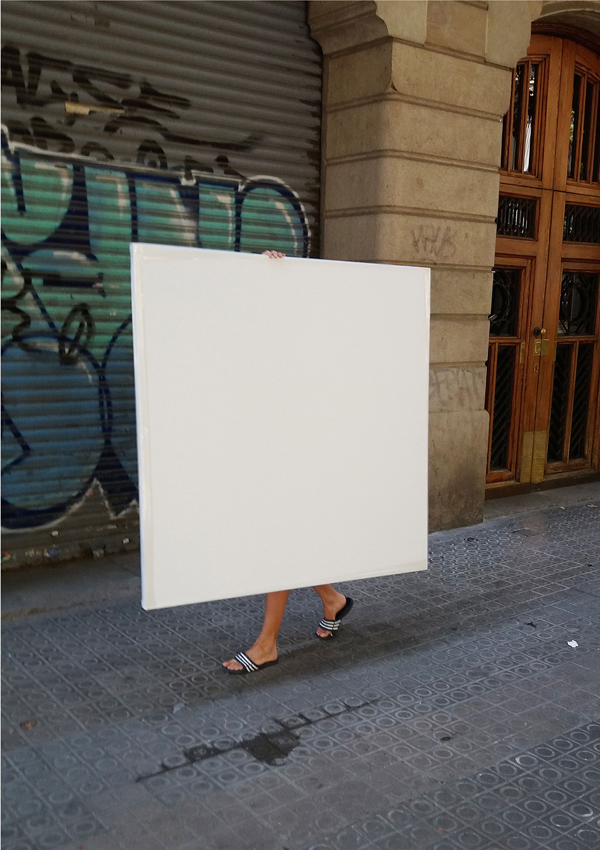 Irene Grau "Sobre no tomar decisiones" photograph, 2019
Irene Grau "Sobre no tomar decisiones" photograph, 2019
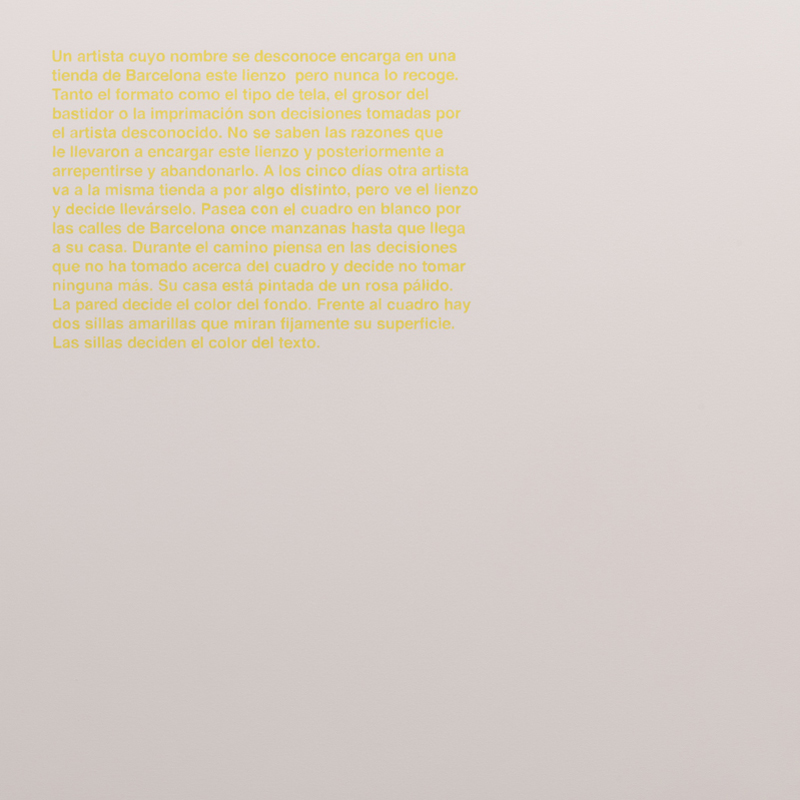 Irene Grau "Sobre no tomar decisiones" painting, 2019
Irene Grau "Sobre no tomar decisiones" painting, 2019
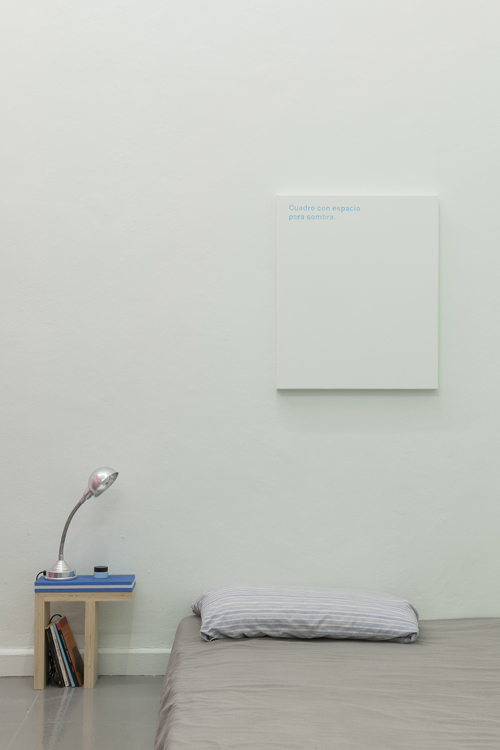 Irene Grau "Cuadron con espacio para sombra", 2019, 65 by 55 cm (approx. 25.5 by 21.6 in.) - installation view during the exhibition "22 days in Bombon", Bombon projects, Barcelona, Spain
Irene Grau "Cuadron con espacio para sombra", 2019, 65 by 55 cm (approx. 25.5 by 21.6 in.) - installation view during the exhibition "22 days in Bombon", Bombon projects, Barcelona, Spain
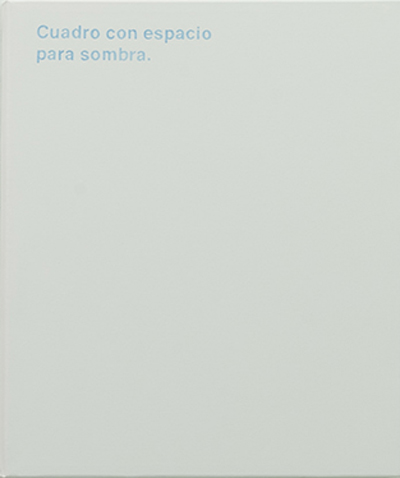 Irene Grau "Cuadron con espacio para sombra", 2019, 65 by 55 cm (approx. 25.5 by 21.6 in.)
Irene Grau "Cuadron con espacio para sombra", 2019, 65 by 55 cm (approx. 25.5 by 21.6 in.)
Cuadro con espacio para sombra
(Painting with space for shade)
2019
acrylic and enamel on canvas
65 by 55 cm (25.5 by 21.6 in.)
private collection, Germany
|
|
Irene Grau
with texts by Ángel Calvo Ulloa Álvaro Negro Enrique Vila-Matas Brett M Levine Irene Grau
English and Spanish 22 by 15,6 cm (approx. 8.6 by 6.1 in.) 216 pages, full color ISBN: 978-84-92772-62-9
|
Spanish artist Irene Grau (born 1986 in Valencia) lives and works in Santiago de Compostela. Grau’s methodology focuses on color as a transforming agent of space, and its perception. A meticulous analysis of an in situ intervention and its transformation through color is quasi-ubiquitous in her work - an approach in the tradition of radical monochromatic painting, as well as mural painting, performative process, and landscape - the latter in a broad sense. The title of her recent doctoral thesis, The Painter on the Road, perfectly sums up her interest and attitude toward the medium of painting, and Irene Grau’s process could perfectly be described as a conceptual pleinairist, who states that her work is "what remains" of a wider experience, going far beyond the physically traveled landscape or an explored architectural structure. Solely transmitting an experience may well lack of concrete information, yet her work leaves enough clues to the viewer to allow access through process, intervention, and the document thereof, in order to visually and conceptually understand the artist’s modus operandi and artistic questioning and concerns.
In 2010 she was the recipient of an Academic Excellence Scholarship, followed by a 2011-2015 FPU Fellowship from the Spanish Ministry of Education, Culture and Sport, allowing her to pursue her doctoral studies. She received her PhD in Fine Arts from the Polytechnic University of Valencia in 2016.
Grau is a recent recipient of the Premio Generaciones, one of the most prestigious Prizes in Spain, accompanied by an exhibition at La Casa Encendida in Madrid. Her work was also included in in the exhibition projects Minimal Gestures at Galerie Heike Strelow in Frankfurt, Germany; and Bajo el brazo. Entre la palma de la mano y la axila at the CaixaForum in Barcelona, Spain.
In early 2018 she had solo exhibitions at Atelier Fidalga, in São Paulo, Brazil; and at Robert Henry Contemporary in Bushwick / Brooklyn, New York. In the Fall of 2018 she will open a solo exhibition in Spain at didac.gal (DIDAC), in Santiago de Compostela.
The recent exhibition construction season at the Madison Museum of Contemporary Art in Madison, Wisconsin, was her first one person Museum exhibition in the US.
_
Irene Grau's oeuvre speaks of painting and landscape, of process and displacement through rigorous research into the possibilities of monochrome painting and its relation to landscape as both genre and framework, but above all as experimentation; as a way of seeing.
Landscape painting that is carried out in the landscape itself preoccupied artists such as Vincent Van Gogh or Paul Cézanne -who might have pioneered a pictorial nomadism of sorts-, but was already an object of study for Courbet, Constable, or Turner. Impressionism was however the first style to work somewhere in between an image and a painting. Whilst Manet managed to get rid of the connection between narrative and spatial depth, Monet abandoned the use of drawing as a way of priming color, dissolving the horizon and blurring the landscape; abandoning the referent. If there is one thing that modern painting aspired to, it was to highlight the materiality of the pigment. Brushstrokes are fragmented, while the areas left empty allow for the brushstrokes to appear in no way final. It is only by looking back that we can guess the origin of, for example, Günther Förg's last paintings. And it is also through knowledge of the past and of art history that these conceptually parallel projects of Irene Grau's gain significance and move forward in the contemporary redefinition of the landscape genre, as well as the idea of displacement, a core concept in her art practice.
- David Barro, didac.gal
exhibition view at La Casa Encendida, Madrid, Spain; showing Ningún lugar en particular (Nowhere in particular), the series for which she received the Premio Generaciones in 2018
Ningún lugar en particular (Nowhere in particular) #AP1/2
unique set comprised of welve individually framed/mounted photographs
2017
UltraChrome on Ilford Galerie Smooth paper, mounted on dibond and methacrylate
AP1/2 of an edition of 1 + 2APs ( APs comprised of the photographs only)
dimensions (each): 35 by 52,5 cm (13.8 by 20.7 in.)
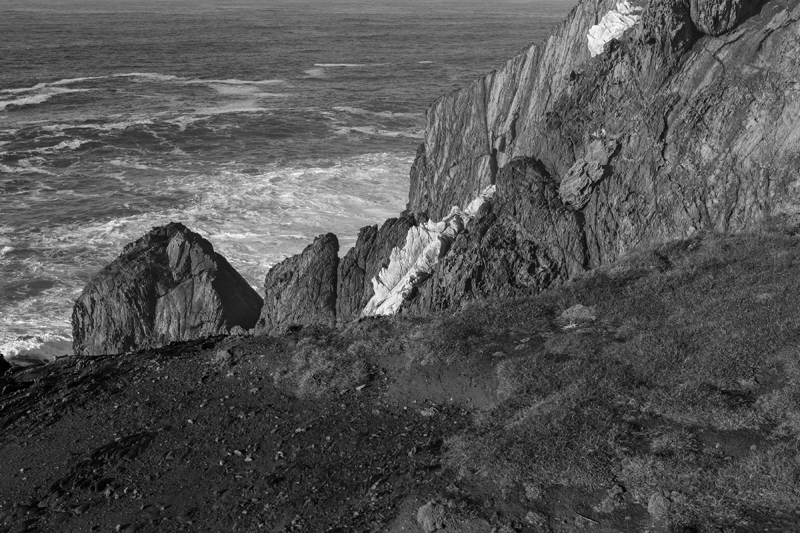 Seixo Branco
Seixo Branco
Seixo Branco
natural structure series
2017
UltraChrome print on Hahnemühle Photo Rag 188g paper,
mounted on dibond
edition of 5+1AP
20 by 30 cm (7.9 by 11.8 in.)
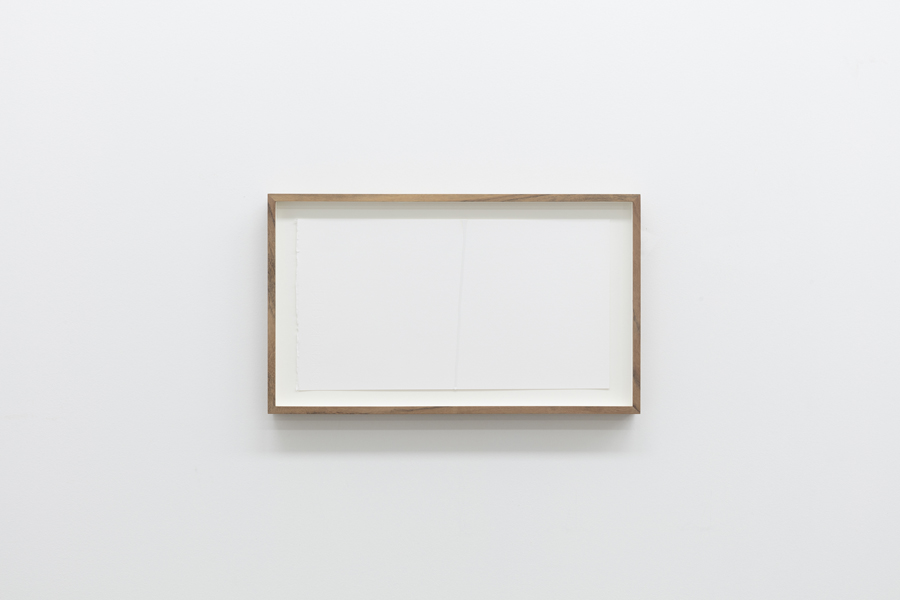 natural structure #D4
natural structure #D4
natural structure #D4
natural structure series
2018
ink on Fabiano paper
29,1 by 48,8 cm (11.5 by 19.2 in.)
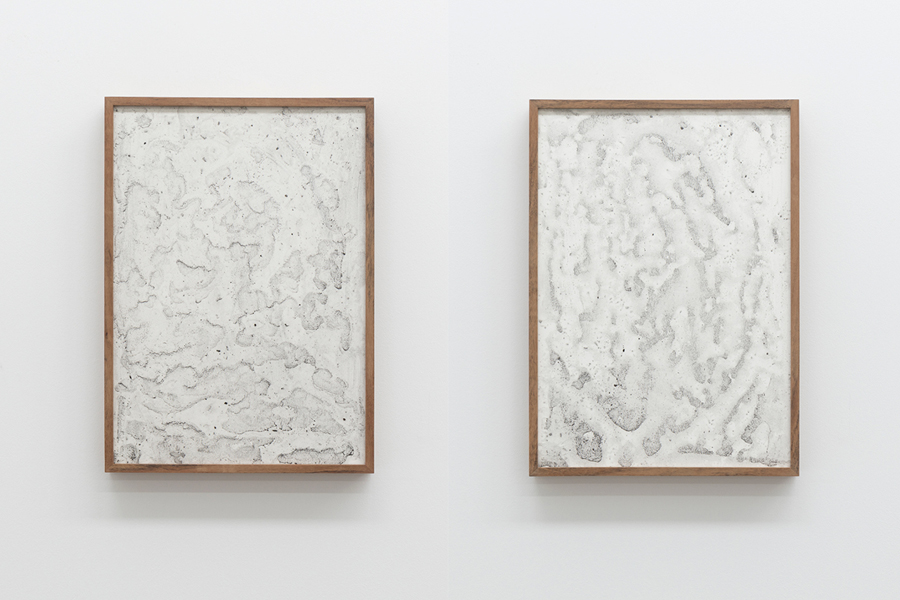 "after October 2017" diptych
"after October 2017" diptych
after October 2017
diptych
2018
charcoal / ash on mylar
each 44 by 31,7 cm (17.3 by 12.5 in.),
individually framed
after October 2017 is a series of organic drawings made from the ashes of trees - victims of the wild fires which ravaged Spain during October of 2017.
"During one of my hikes, I found a completely burned forest. I decided to collect a charred branch and ashes from trees destroyed by fire and to create a series of drawings with these residues, in order to turn my anger into something productive.
This series comes from the fire of Tourón - one of the most wonderful places in Galicia, and the drawings are all that remains of the woods of this beautiful forest region after having been devastated by the fires. They are its last witnesses."
- Irene Grau, March 2017
To see with one’s feet.
I was walking when I found this painting. Walking in the mountains. Since then I was following it, or maybe it was the painting accompanying me and showing me the way, from a distance. Possibly painted by other wanderers, no matter who, and if time erases it, others will come and paint again. It is authorless, undated. Quietly demanding attention; it is small, yet strategically well placed. It multiplies, breaks, and disperses in the landscape, covering hundreds of kilometers; yet still demands our attention, just as the everchanging landscape remains the very same at every step. Housed on rocks and logs, often in pairs; couples who can not communicate, irremediably looking in opposite directions. Wanderers will never see them united, ever only seeing one of them at a time, depending on the wanderer’s walking direction, and never getting a direct view on both. Its presence is denied and only the constant movement leaves its trace. This is indeed a painting which is seen with one’s feet.
--
A painting, favoring a frontal view above all, is a bi-dimensional format in which depth only exists as an illusion, its shallow depth hidden by its frame, thus protecting the painting’s physical reality and its vulgar structural support, denying the spectator the discovery of the painting’s representative eagerness being an illusory trap. The history of the frame and the increasingly deliberate visibility of the painting’s edge hold all of the painting’s history. The painting’s edge, its limit, place of the error, the mistake, the accidental mark; the space of the involuntary gesture, most faithful of all witnesses, and its will to conceal or reveal, talking to us about the painter’s deepest intentions.
It is exactly here, on the painting’s very edge, in this small lateral space, where everything happens.
- Irene Grau, October 2017
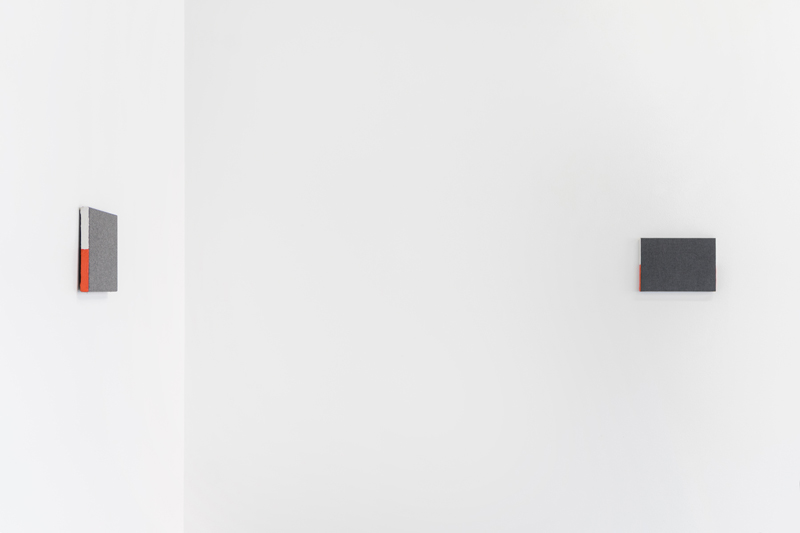 installation view ≠ exhibition at Maus Contemporary
installation view ≠ exhibition at Maus Contemporary
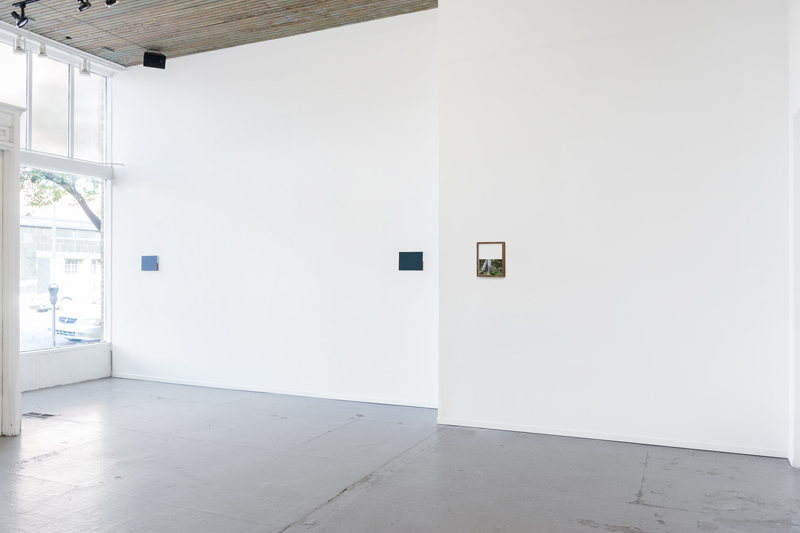 installation view ≠ exhibition at Maus Contemporary
installation view ≠ exhibition at Maus Contemporary
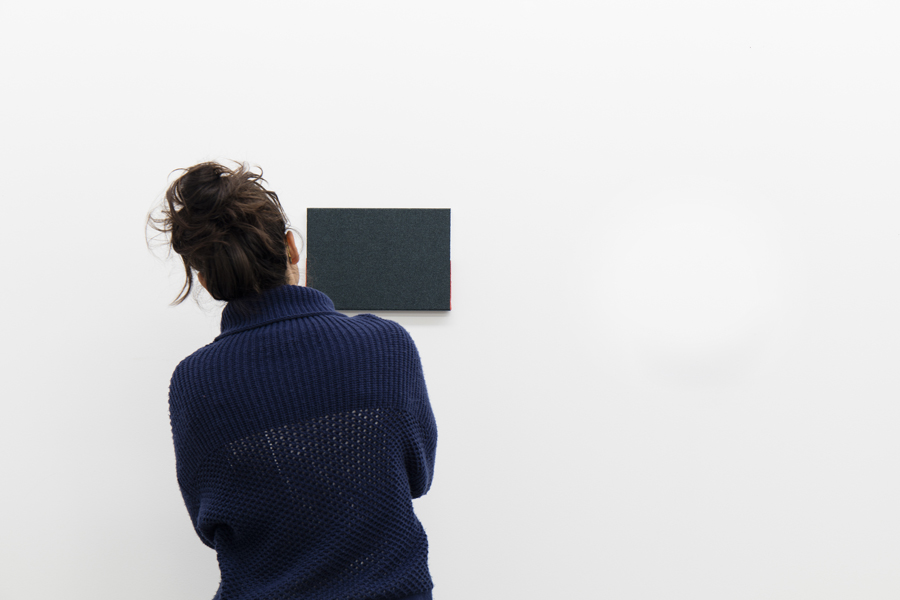 Irene Grau ≠
Irene Grau ≠
≠
2017
a series of new paintings,
oil on stretched fabric,
7.5 by 10.6 in. (19 by 27 cm)
and one A4-sized photograph
(in a edition of 2+1AP)
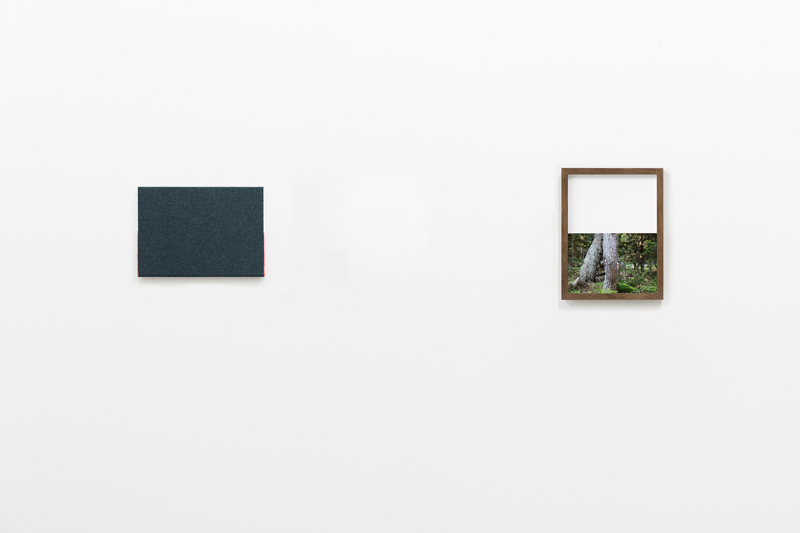 Irene Grau ≠
Irene Grau ≠
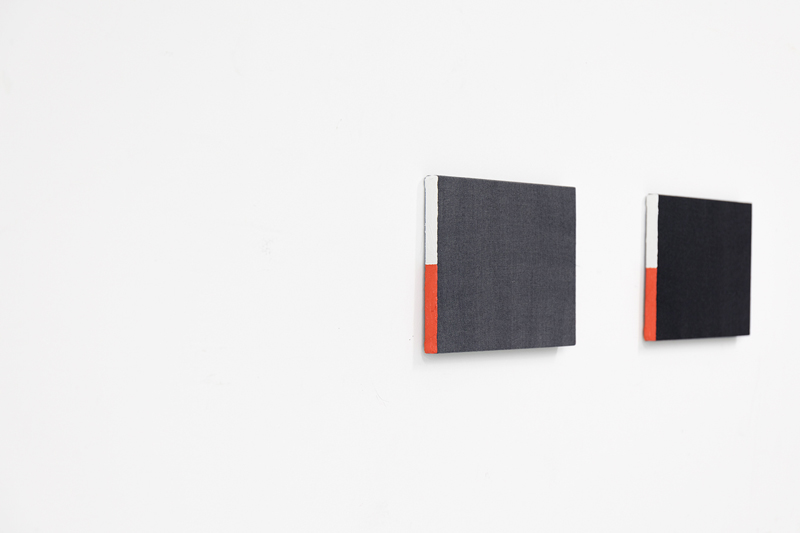 ≠
≠
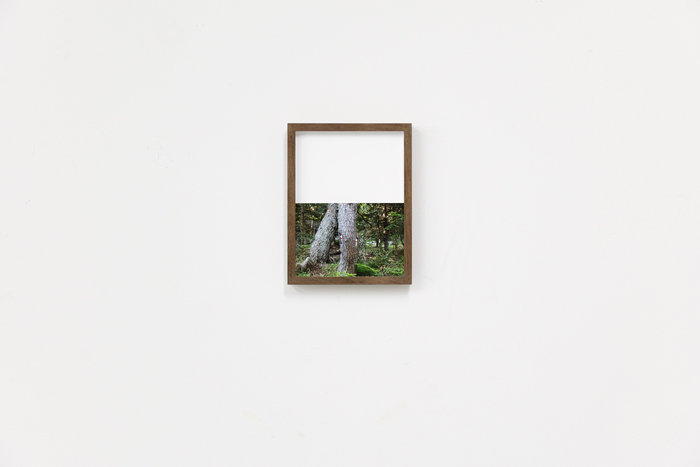 ≠
≠
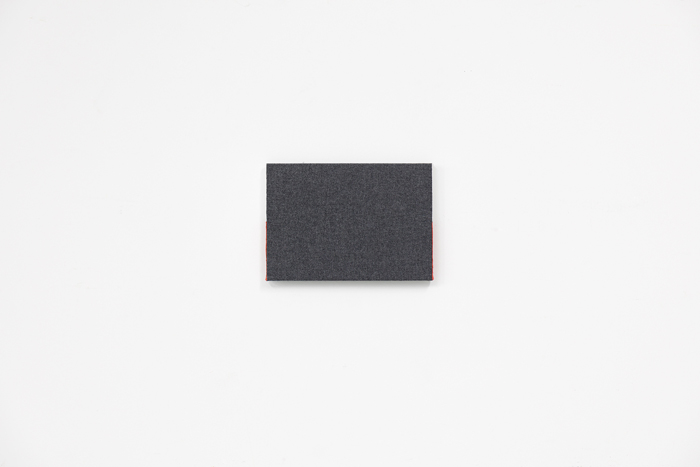 ≠ (1)
≠ (1)
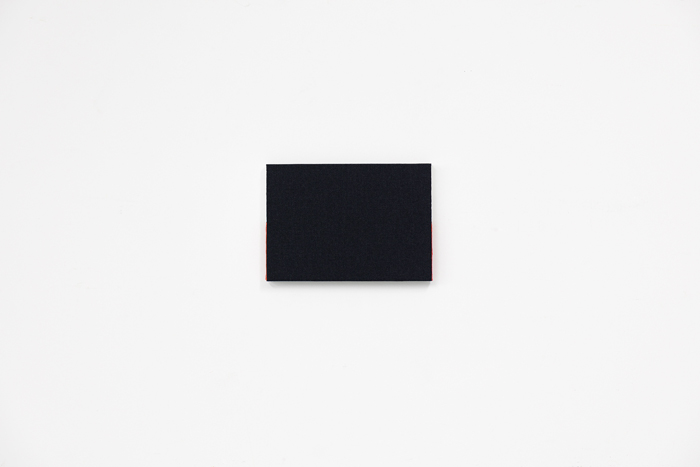 ≠ (2)
≠ (2)
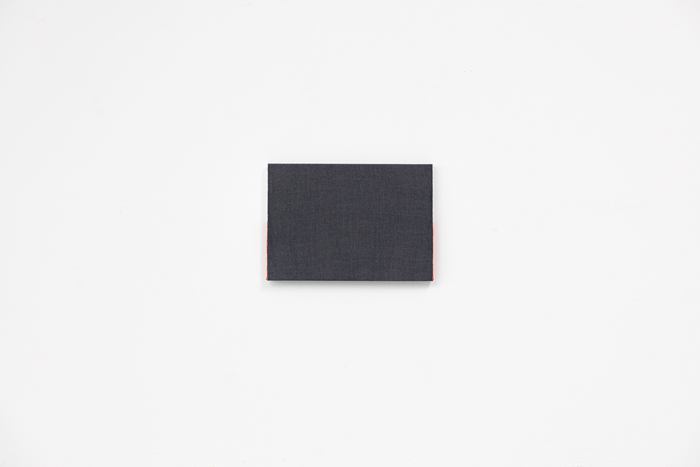 ≠ (3)
≠ (3)
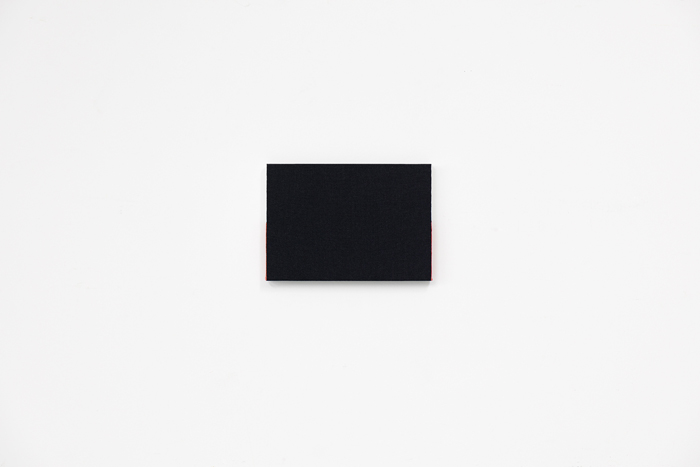 ≠ (4)
≠ (4)
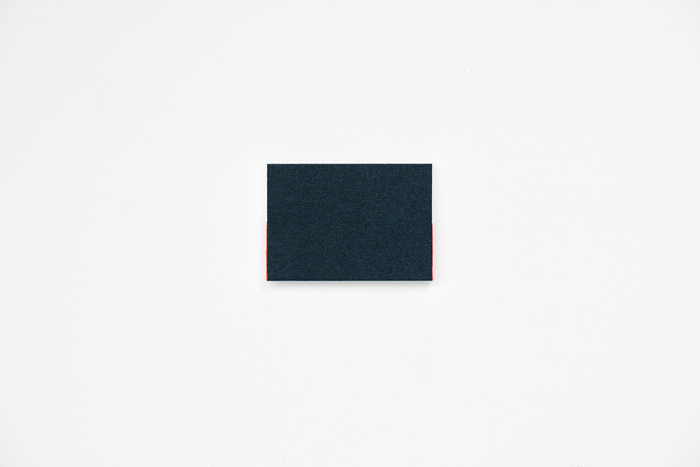 ≠ (5)
≠ (5)
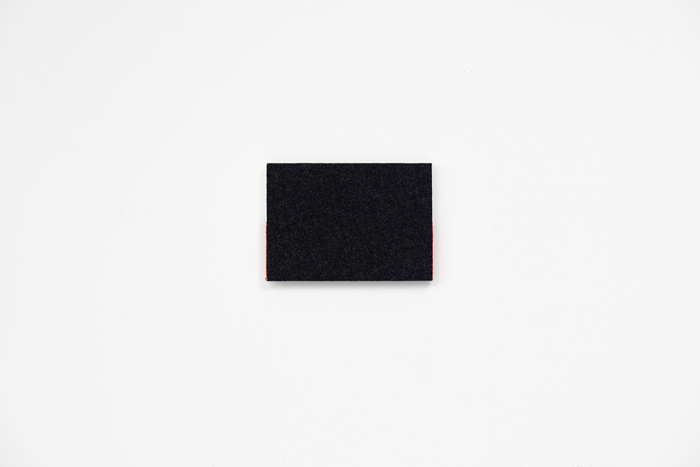 ≠ (6)
≠ (6)
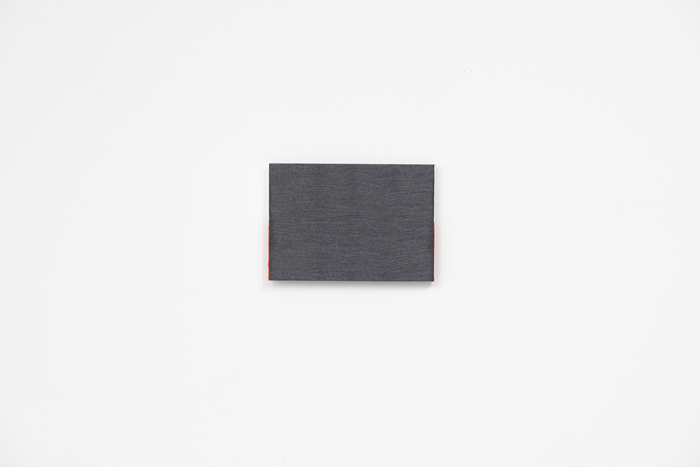 ≠ (7)
≠ (7)
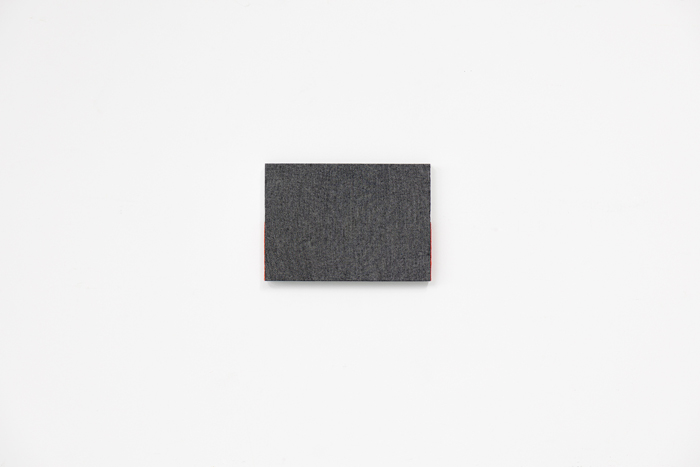 ≠ (8)
≠ (8)
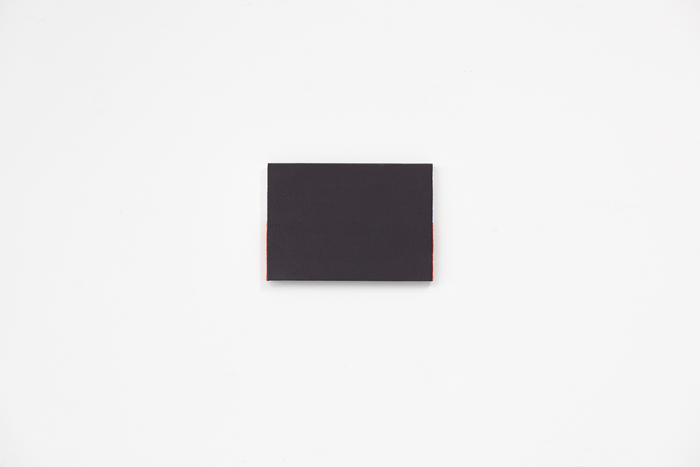 ≠ (9)
≠ (9)
 ≠ (10)
≠ (10)
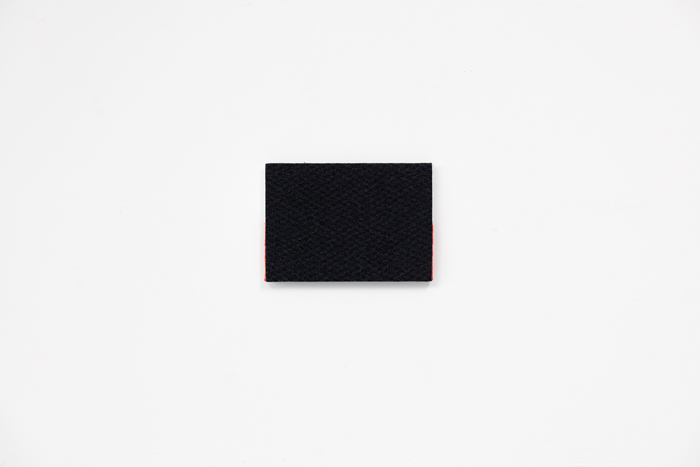 ≠ (11)
≠ (11)
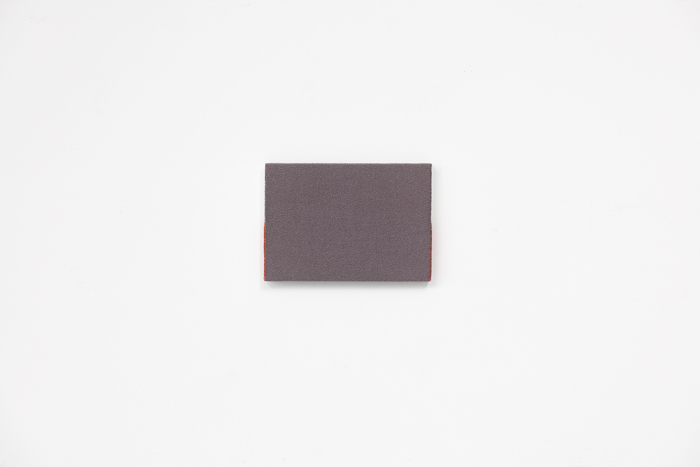 ≠ (12)
≠ (12)
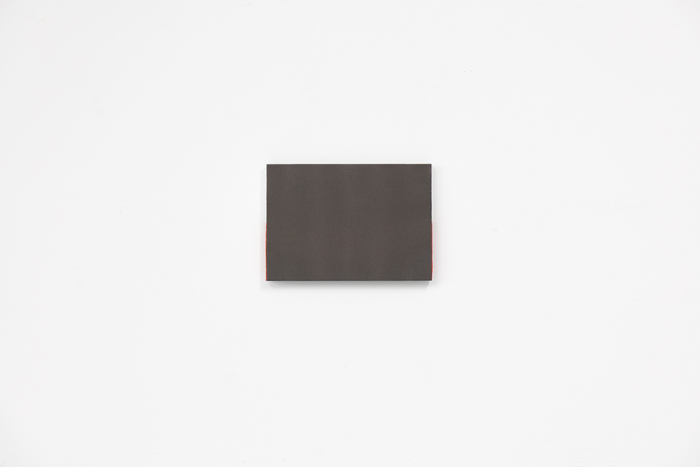 ≠ (13)
≠ (13)
 ≠ (14)
≠ (14)
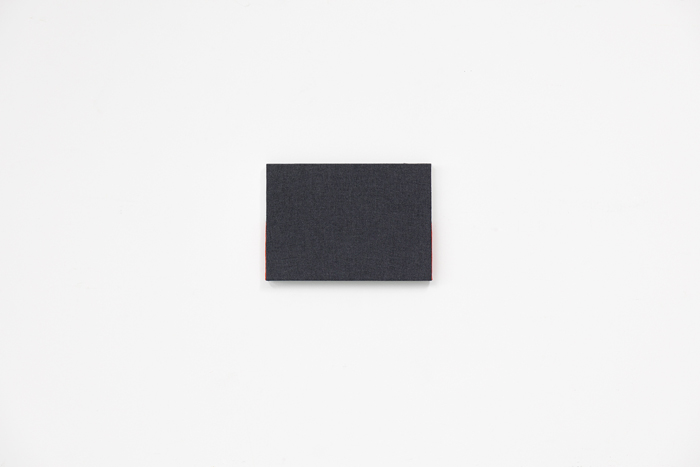 ≠ (15)
≠ (15)
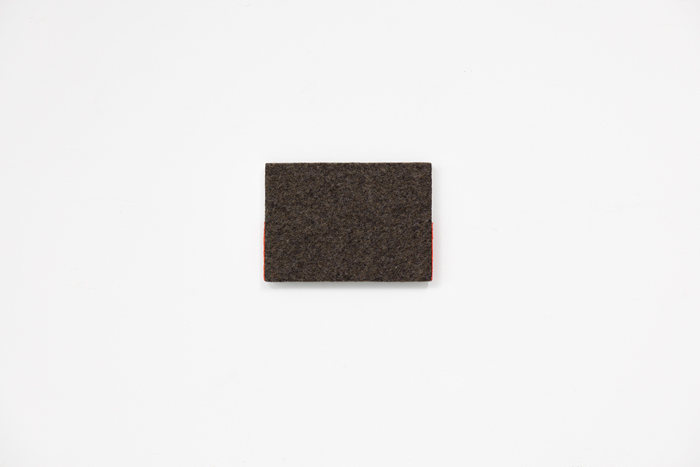 ≠ (16)
≠ (16)
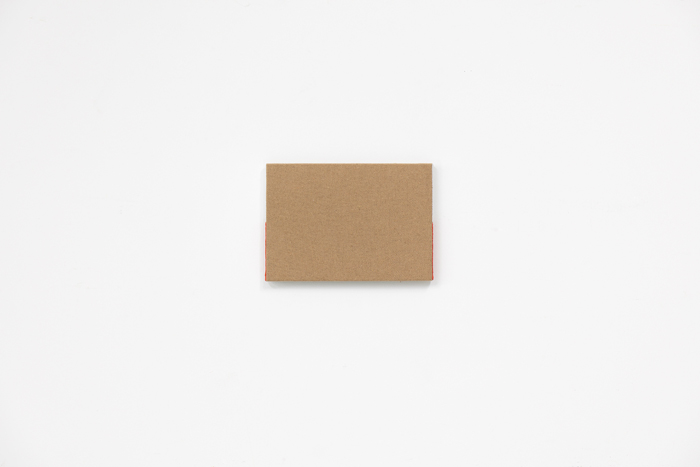 ≠ (17)
≠ (17)
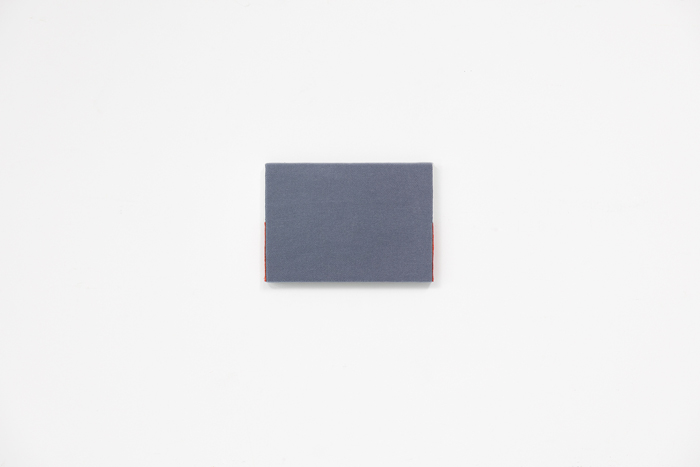 ≠ (18)
≠ (18)
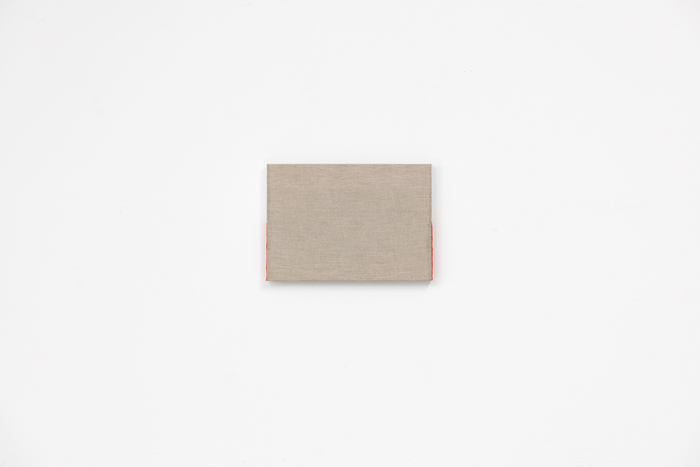 ≠ (19)
≠ (19)
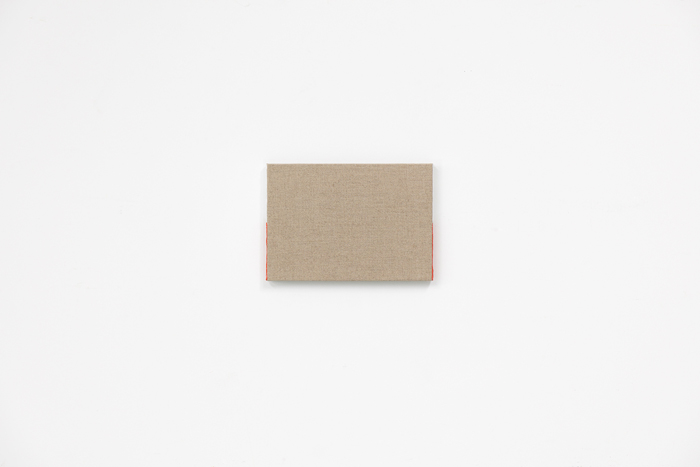 ≠ (20)
≠ (20)
pleinairist monochromes
2017
a new series of five paintings
(oil on stretched fabric, dims variable)
and five photographs
(30,3 by 43 cm, edition of 1+1AP)
private collection Geneva, Switzerland
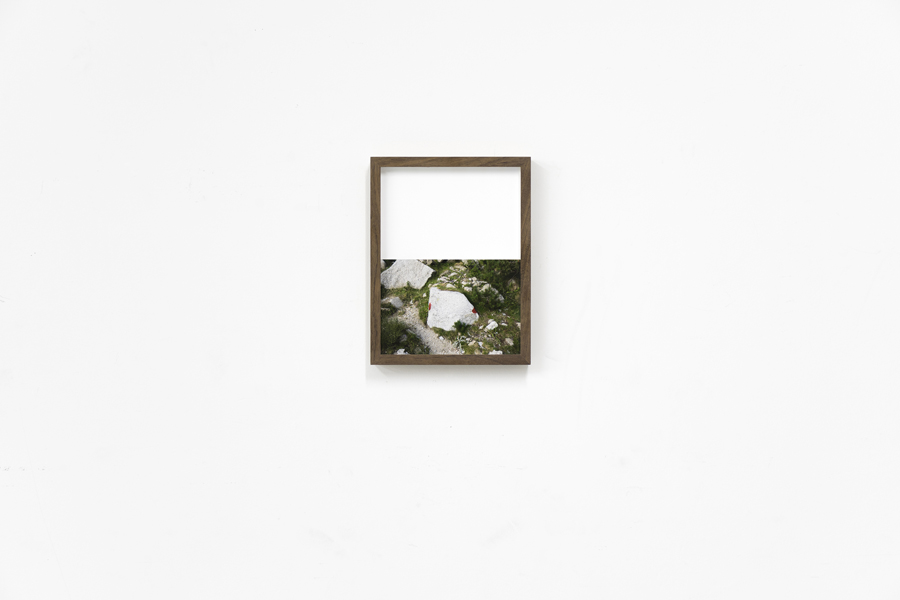 Irene Grau Las afueras.
Irene Grau Las afueras.
Las afueras. Banlieue. Outskirts.
2017
a new series of paintings
oil on stretched fabric, dims variable
and one A4-sized photograph
(in a edition of 2+1AP)
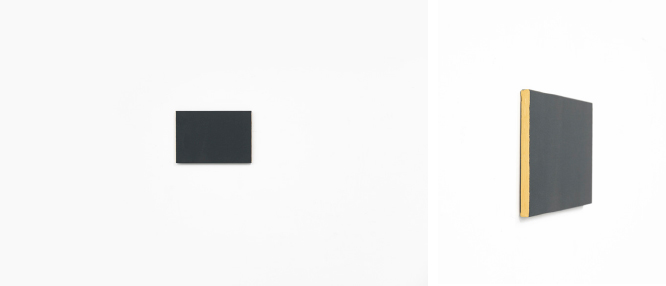 Las afueras (I)
Las afueras (I)
Las afueras. (I)
2017
oil on stretched fabric
24 by 35 cm (9.4 by 13.8 in.)
 Las afueras (Las afueras (I)I)
Las afueras (Las afueras (I)I)
Las afueras. (VI)
2017
oil on stretched fabric
81 by 130 cm (31.9 by 51.2 in.)
To see with one’s feet.
I was walking when I found this painting. Walking in the mountains. Since then I was following it, or maybe it was the painting accompanying me and showing me the way, from a distance. Possibly painted by other wanderers, no matter who, and if time erases it, others will come and paint again. It is authorless, undated. Quietly demanding attention; it is small, yet strategically well placed. It multiplies, breaks, and disperses in the landscape, covering hundreds of kilometers; yet still demands our attention, just as the everchanging landscape remains the very same at every step. Housed on rocks and logs, often in pairs; couples who can not communicate, irremediably looking in opposite directions. Wanderers will never see them united, ever only seeing one of them at a time, depending on the wanderer’s walking direction, and never getting a direct view on both. Its presence is denied and only the constant movement leaves its trace. This is indeed a painting which is seen with one’s feet.
- -
A painting, favoring a frontal view above all, is a bi-dimensional format in which depth only exists as an illusion, its shallow depth hidden by its frame, thus protecting the painting’s physical reality and its vulgar structural support, denying the spectator the discovery of the painting’s representative eagerness being an illusory trap. The history of the frame and the increasingly deliberate visibility of the painting’s edge hold all of the painting’s history. The painting’s edge, its limit, place of the error, the mistake, the accidental mark; the space of the involuntary gesture, most faithful of all witnesses, and its will to conceal or reveal, talking to us about the painter’s deepest intentions.
It is exactly here, on the painting’s very edge, in this small lateral space, where everything happens.
Mirar con los pies.
Fue caminando como encontré esta pintura. En la montaña. Desde entonces la seguí, o quizás fue ella la que me acompañó y me mostró cómo llegar a cualquier sitio, por remoto que éste fuese. Al parecer la pintaron otros caminantes, pero no importa quienes, cuando el tiempo pretenda borrarla vendrán otros y pintarán de nuevo. No tiene autor, ni fecha. Reclama discretamente la atención; pequeña pero estratégicamente visible. Se multiplica, fragmenta y dispersa en el territorio, abarcando cientos de kilómetros, y aún así exige una percepción continuada; del mismo modo que el paisaje es otro a cada paso y a la vez es el mismo. Se hospeda en todo tipo de rocas y troncos, en muchas ocasiones por parejas, pero son parejas que no se comunican entre ellas ya que no pueden verse la una a la otra, miran irremediablemente en sentidos opuestos. De este modo, en el flujo de la marcha los
caminantes no las verán nunca juntas, verán una u otra en función del sentido en el que vayan, sólo una en cada caso. El punto de vista único y frontal no existe. Cualquier detención es rechazada y sólo en el desplazamiento constante permanece visible. Es ésta una pintura que se ve con los pies.
--
El cuadro, diseñado para priorizar la visión frontal por encima de cualquier otra, es un formato bidimensional en el que la profundidad sólo existe en tanto que espejismo. Históricamente su escasa profundidad se ha ocultado tras el marco, protegiendo así la mirada de la realidad física y vulgar del soporte y por tanto del descubrimiento de la trampa ilusoria que es la pintura en su afán representativo. La historia del marco y la progresiva visibilidad del borde encierran toda la historia de la pintura. El borde es el lugar del fallo, del accidente, de la huella fortuita, es el lugar del gesto involuntario. Por todo ello es el testigo más fiel de lo que allí ocurrió, y su sola voluntad de ocultación o exhibición ya nos habla de las intenciones más profundas del pintor.
Es precisamente ahí, en ese pequeño espacio lateral, donde todo ocurre.
Regarder avec les pieds.
Je marchais quand j’ai trouvé cette peinture. Dans les montagnes. Ou alors c’est elle qui m’accompagnait et qui me montrait le chemin, à distance. Apparemment peint par d’autres marcheurs, mais peu importe qui, et si le temps l’efface, d’autres viendront et peindront à nouveau. Elle n’a pas d’auteur, n’est pas datée. Réclamant discrètement l’attention; elle est petite, mais stratégiquement bien placée. Il se multiplie, se fragmentant et se dispersant sur le territoire, couvrant ainsi des centaines de kilomètres; tout en continuant de de réclamer notre attention, comme le paysage qui change à chaque pas, tout en restant le même. Logé sur des roches et troncs, souvent par paires; des couples qui ne savent cependant pas communiquer, regardant souvent irrémédiablement dans des directions opposées. Ainsi les marcheurs ne les verront jamais unies, et n’en verront que l’un ou l’autre, selon leur direction de marche; les marcheurs n’ayant en aucun moment un point de vue unique et frontal. Toute admission est réfutée et seul le déplacement constant laisse une trace; un tableau visible avec les pieds.
- -
Une peinture, favorisant la vue de face avant tout autre, est un format bidimensionnel dans lequel la profondeur n’existe que sous forme d’un mirage, sa profondeur superficielle cachée derrière son cadre, ne relevant ainsi ni sa réalité physique ni son support vulgaire, empêchant donc la découverte de ce piège illusoire qu’est la peinture dans son désir de représentation. L’histoire du cadre et la visibilité progressive du bord du tableau contiennent toute l’histoire tu tableau. Le bord du tableau, cette frontière, qui est l’emplacement de la faute, de l’erreur, de la marque accidentelle; le lieu du geste involontaire, véritable et fidèle témoin de ce qui s’est vraiment passé, et sa volonté unique de dissimuler ou d’exposer nous révèle les intentions les plus profondes du peintre.
C’est précisément dans le bord du tableau, dans ce minuscule espace latéral, que tout se passe.
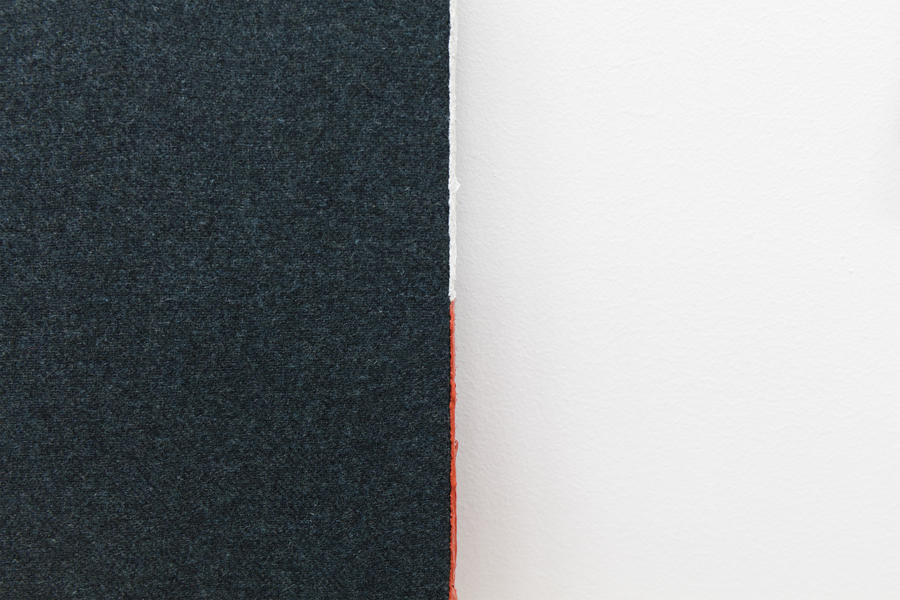 Irene Grau "Las afueras." (detail)
Irene Grau "Las afueras." (detail)
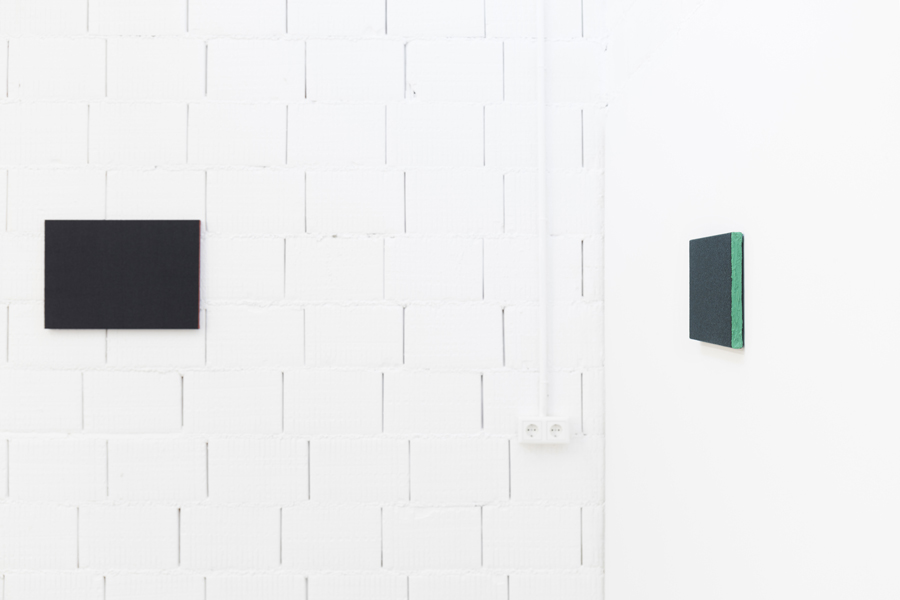 Irene Grau "Las afueras" (atelier view)
Irene Grau "Las afueras" (atelier view)
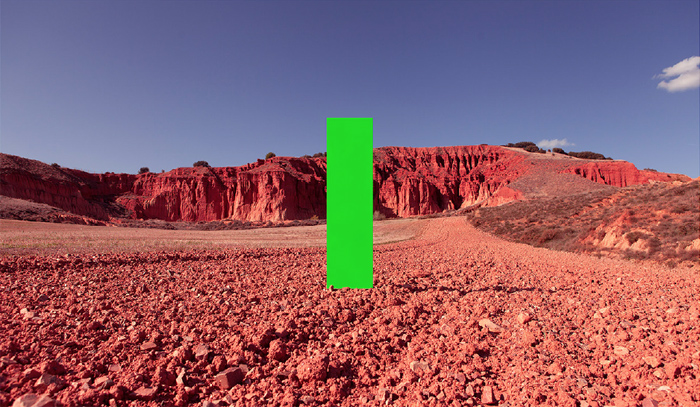 Color Field - limited edition portfolio box
Color Field - limited edition portfolio box
2015
 Color Field - limited edition portfolio box
Color Field - limited edition portfolio box
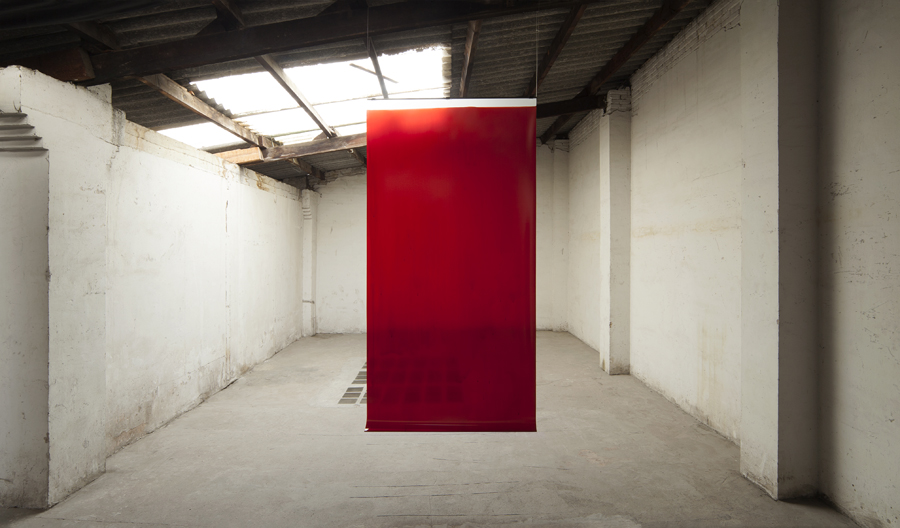 Red, from the series "4 litros"
Red, from the series "4 litros"
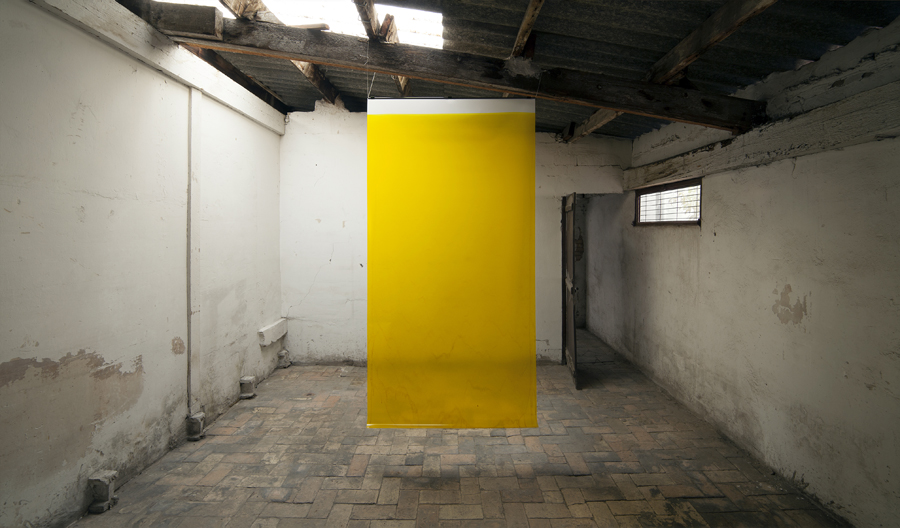 Yellow, from the series "4 litros"
Yellow, from the series "4 litros"
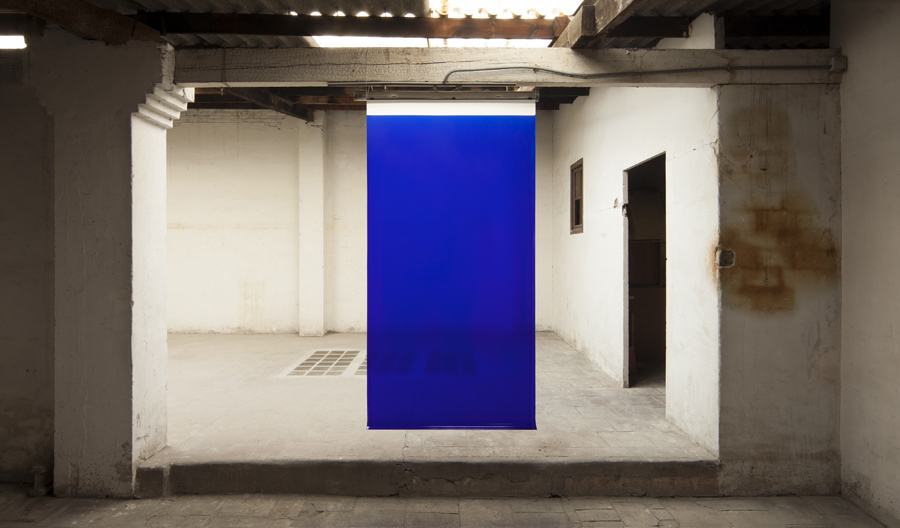 Blue, from the series "4 litros"
Blue, from the series "4 litros"
4 litros
Red
Yellow
Blue
2014-2017
ultrachrome print on Ilford Galerie Smooth Gloss paper,
mounted on dibond and methacrylate
each photograph ca. 27 by 46 cm (approx. 10.6 by 18.1 in.)
#2/2 of an edition of 2+1AP (last available)
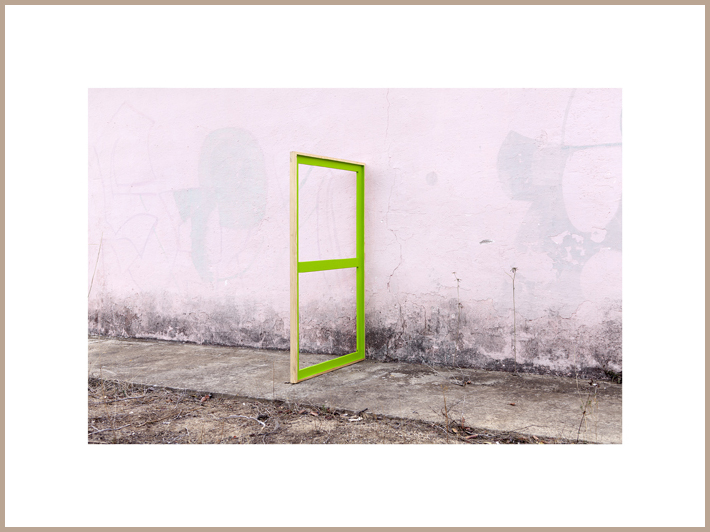 |
 |
|
Green Stretcher on a Pink Wall #2/2
2014-2016
two ultrachrome prints on baryta-coated Ilford Gold Fibre Silk paper,
mounted on 2mm Dibond
each photograph ca. 56.7 by 76 cm (approx. 22 5/16 by 29 7/8 in.)
#2/2 of an edition of 2+1AP (last available)
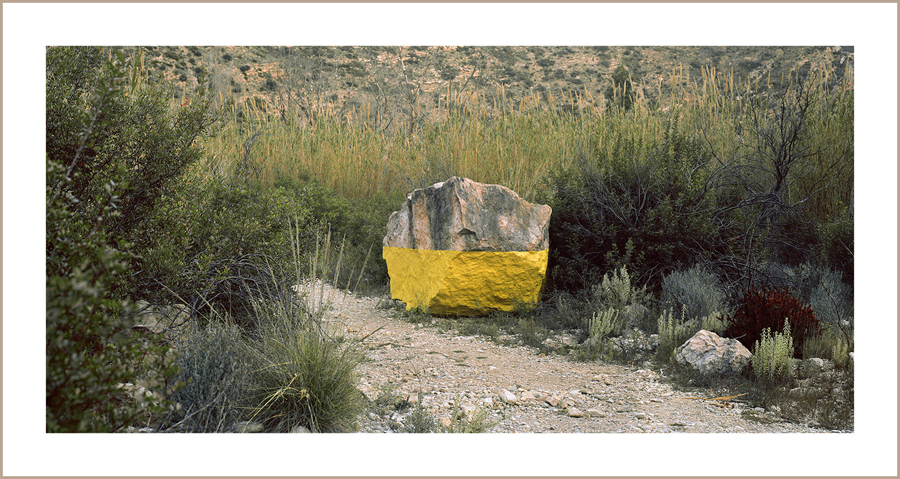
Irene Grau
Yellowstone
2016
edition of 1 +1AP
archival pigment print on Ilford Gallery Prestige Smooth Pearl paper,
mounted on 2mm dibond
143 × 270 cm (56 3/10 × 106 3/10 in.)
collection of the Centro De Arte Dos De Mayo, Móstoles (Madrid), Spain
and
collection of IBERDROLA, Madrid, Spain
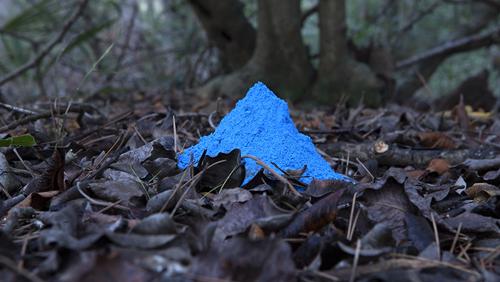 |
Irene Grau ▲
|
"I paint in order to seek a space, and in this process the painting is integrated into structures simply to show the color - color, nothing else. But that color always extends over a surface, which no longer has to be flat, and 'that' which happens between the color and the surface is what for me takes on an essential relevance. That halo that seems to go beyond the support and project itself over some other place. Painting, like walking, is a process of relationship with space."
- Irene Grau
por favor continúe para el texto en español
An action repeated twelve times: twelve peaks of paint.
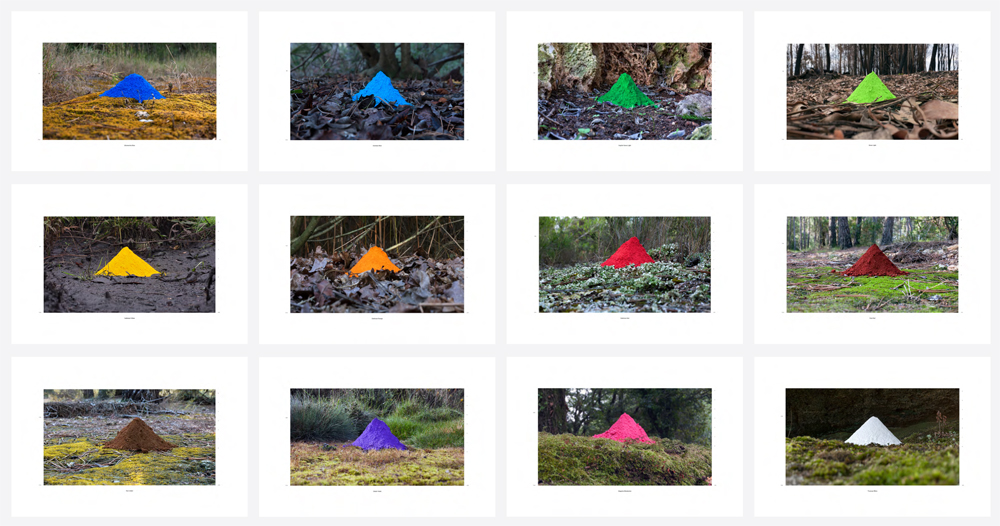
Irene Grau ▲
A series of twelve ultrachrome prints on baryta-coated Ilford Gold Fibre Silk paper
46 by 68 cm (18.125 by 26.75 in.), ed. 5+2AP

Irene Grau
Cerulean Blue 368 ft asl.
2015
ultrachrome print on baryta-coated Ilford Gold Fibre Silk paper
46 by 68 cm (18.125 by 26.75 in.), ed. 5+2AP
"Pinto para buscar un espacio. En este proceso la pintura se integra en estructuras tan sólo para mostrar el color -color, nada más-; color que se extiende siempre sobre una superficie, que ya no tiene por qué ser plana, y 'eso' que ocurre (entre el color y la superficie) es lo que adquiere para mí una relevancia esencial. Ese halo que sobrepasa el soporte para proyectarse sobre otro lugar. La pintura, como el caminar, es un proceso de relación con el espacio."
- Irene Grau
Irene Grau opta por un símbolo como título del proyecto. El símbolo▲. El triángulo, un signo que hace referencia a la montaña y a su representación en el mapa. Con esta nueva serie de doce fotografías, la artista nos invita una vez más a salir al exterior, lejos de la comodidad del estudio, a descubrir la pintura fuera, en una suerte de proceso pictórico que tiene lugar en el exterior. Como en sus anteriores series "Lo que importaba estaba en la línea, no en el extremo" (2015), "Color Field" (2014) y "Esmalte sobre bastidor en paisaje" (2014), Irene Grau nos adentra en un viaje, una caminata para ser más precisos.
Una acción que se repite doce veces: doce picos de pintura.
Irene Grau (n. 1986) realizó sus estudios en la Accademia di Belle Arte di Palermo in Sicilia, Italia, y en la Universitat Politècnica de Valencia, España, donde cursó también máster y doctorado. En 2010 recibió una Beca de Excelencia Académica y en 2011 la beca FPU del Ministerio de Educación, Cultura y Deporte para realizar sus estudios de doctorado. Grau ha expuesto su trabajo a nivel internacional en exposiciones individuales y colectivas desde 2008, recientemente en Rio de Janeiro y en São Paulo, Brasil; Madrid, Barcelona, Bilbao, y Valencia, España; y en el Museo de Arte Contemporáneo de Santo Domingo, República Dominicana, Su obra se encuentra en numerosas colecciones de Europa, Asia, y EE.UU.
Irene Grau. Salir a buscar la pintura.
Ángel Calvo Ulloa
please scroll down for Ángel Calvo Ulloa's text in English
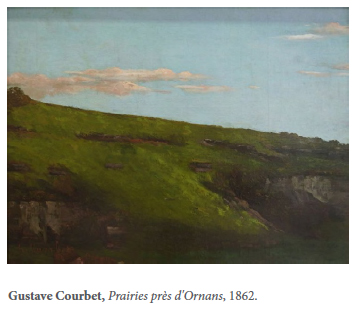
Ángel Calvo Ulloa
The Mexican philosopher José Vasconcelos said, "traveling by foot is the fundamental measurement, the first measurement of all distances, in all civilizations".
Irene Grau goes up the mountain to paint, because her need to walk is interwined with her need to paint. She did this in her series Color Field, in which she travelled long distances by foot, carrying her art, in order to install and then photograph her works surrounded by nature, in the presence of each other. We also see this relationship in Lo que importaba estaba en la línea, no en el extremo (What Mattered Was on the Line, Not at the End), where the route she traveled determined the color and size of what was painted, and where the line defined the difficulty of the route relative to its natural topography.
To share a small digression, it is impossible not to think of Kirk Douglas when we see these paintings in the natural world. For this is how we came to know as "the mad, red-headed artist", in Vicente Minelli's Van Gogh, or perhaps through Jacques Dutronc, in the version by Maurice Pialat.
Vasconcelos also observes that "almost all other external forms in every civilization depend on the distances that one can travel by foot and the time it takes to do so". Perhaps it is in the photographic record where we, the spectators, form a vague idea of what the artist´s experience has been, of painting in the studio, and then of beginning a journey which restores them to a natural setting. It could be that Grau´s journey is a reverse journey, which reminds us of a canvas painted en plein air that returns home under the artist´s arm. It would not be so far-fetched to say that the painting of a precise historic moment is measured by the length of an arm, literally and figuratively the length of an artist's 'reach', which allows a canvas to be transported to the chosen spot. "On the tip of the tongue, on the inclement tip of the tongue, sheer and wild, create a concert there. Bring up the instruments and the seats, but don't perform anything... Let the instruments listen, up there, to the utmost volume of the tongue..."
Irene Grau's current work is up the mountain again, creating little mounds of pigment which increase the height of the mountain itself. In each snapshot, details are given on the total height that has been scaled in order to deposit those mere 10 centimeters of pigment, which once photographed, are then removed. Again Grau takes her painting out of the studio, in this case in an original state, to situate it below a triangular form. The triangle defines the mountain itself, and it is also the graphic representation of Saussure's semiotic model that explains the composition of the linguistic sign: sign, signifier, signified. So it is not merely an incidental relationship that Grau establishes, between the image she creates, the symbol that represents it and the canonical image of the sign, in this case, the geometric shape of the triangle. How could it be anything other than the triangle?
Perejaume would say: "Put the gold back in the earth, scatter the bronze, the marble and the ivory across the mountains, so they may represent that which we most lack today: the place whence they came".
In all of this, there is a returning to the source, a return to that from which landscape emerges. Irene Grau has discovered that what she wants to paint is up there, and for this reason she resolutely goes out looking for it. On the walls of the Neue Galerie in the German city of Kassel hangs Courbet's disconcerting 1862 landscape painting Meadows Close to Ornans (Prairies près d'Ornans). I cannot help but find all of Irene Grau's intention encapsuled in this work. It concedes not even a shred of human presence to give us any idea of scale, but the fresh air and the smell of grass seem to seep into the room. Courbet was a studio artist, but perhaps these meadows returned in their time, under the artist´s arm, to the place from which they were wrested. Or perhaps not.
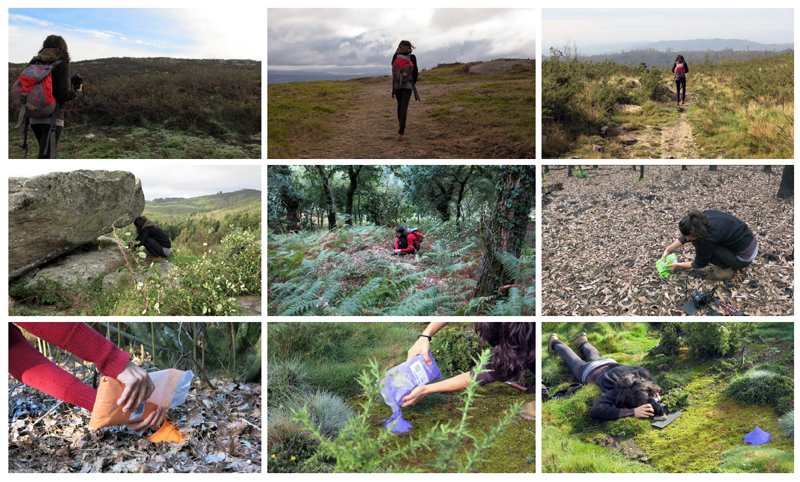
Irene Grau during the ▲ project
photographs by David Garabal
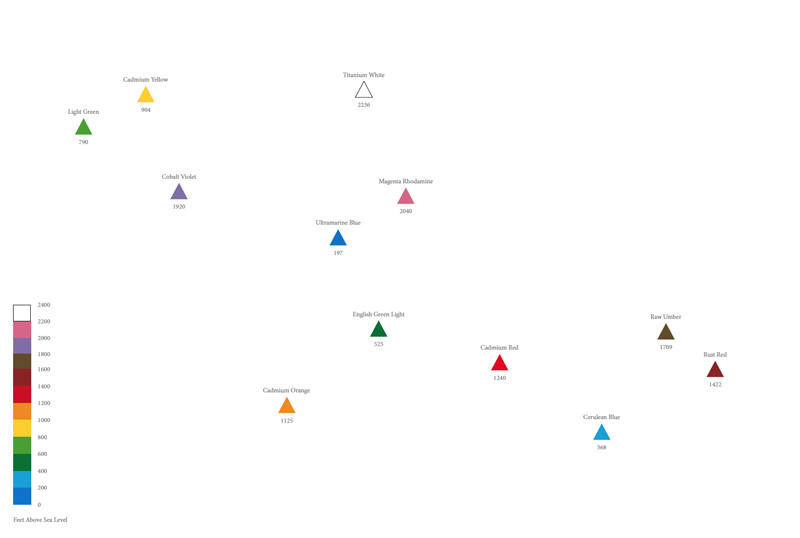
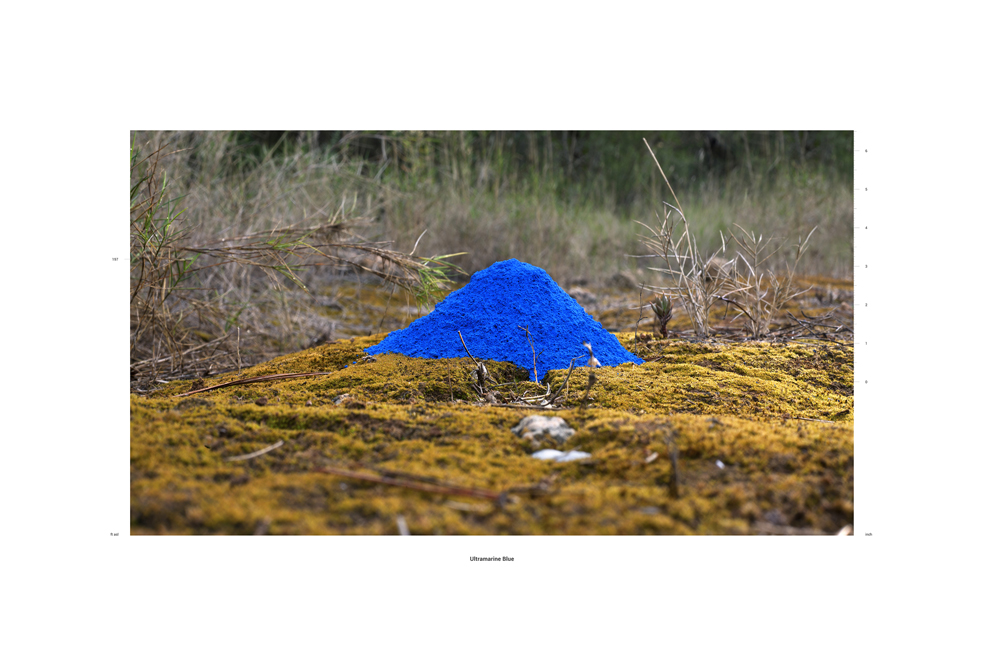

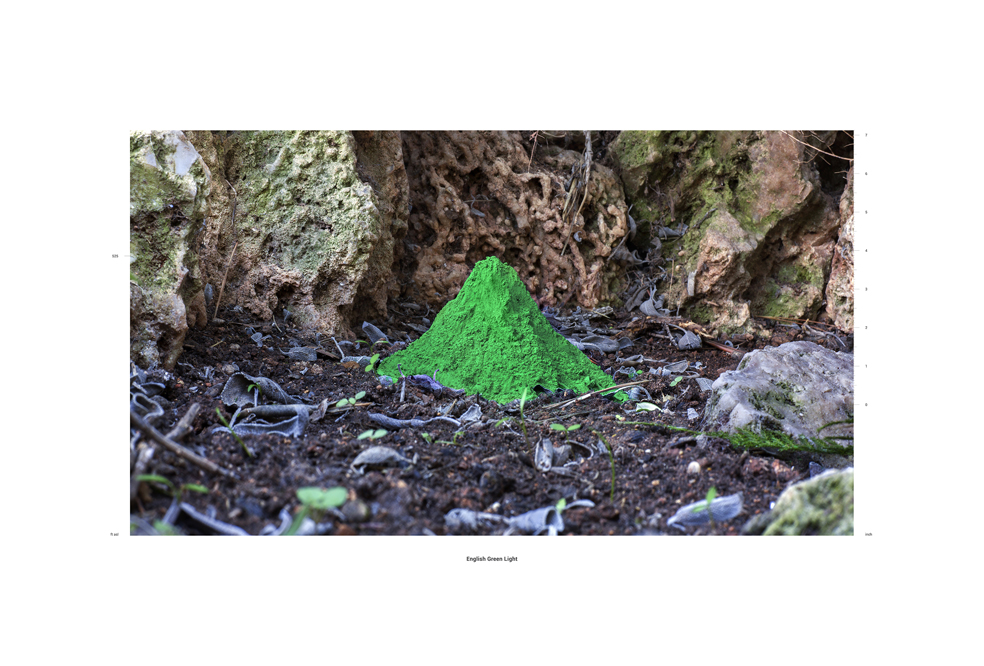
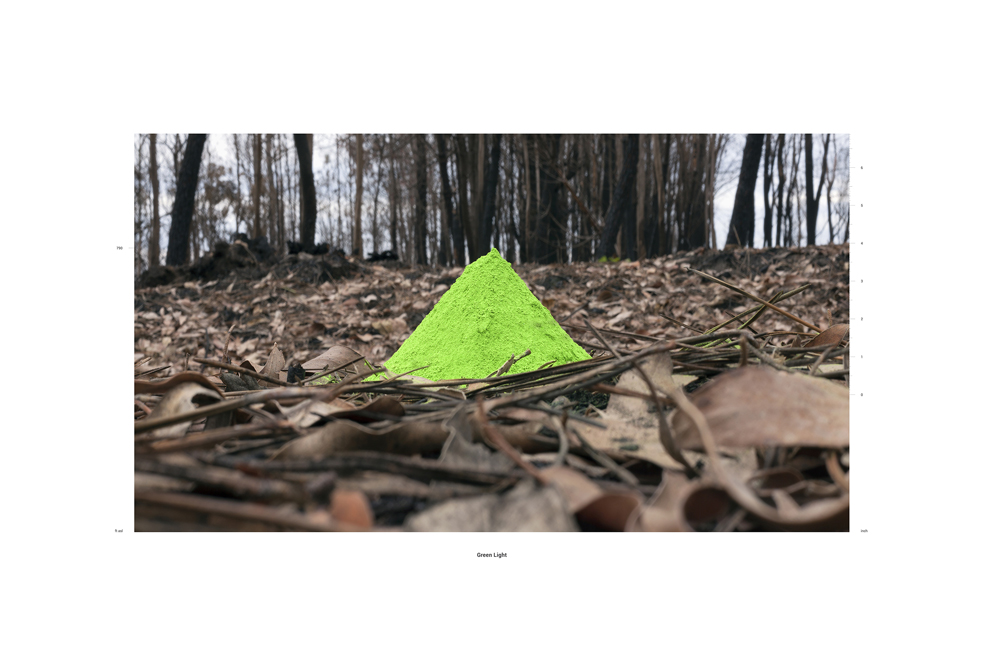
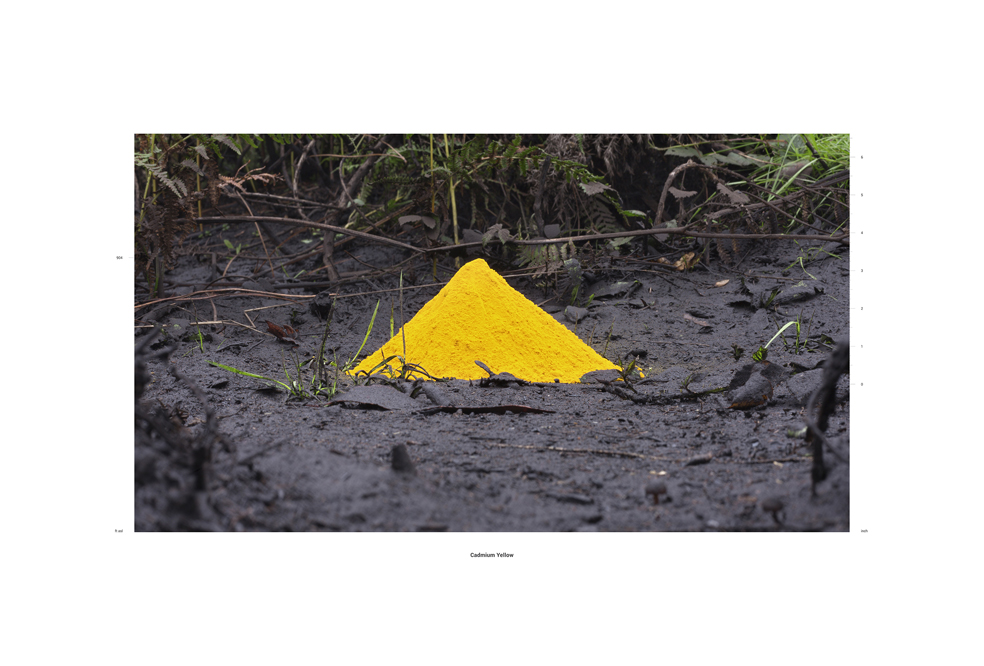
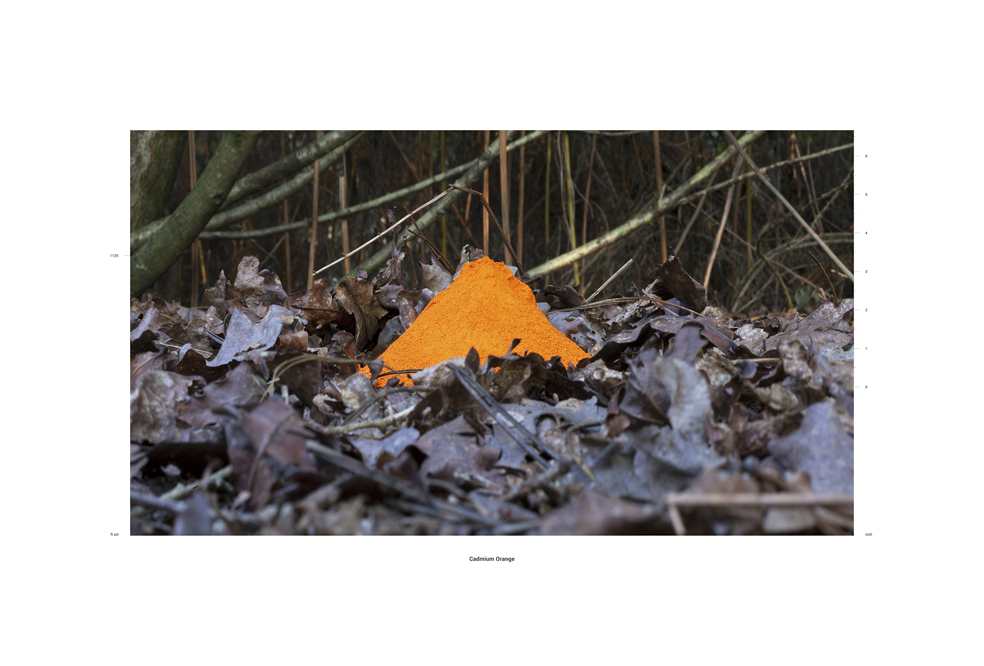
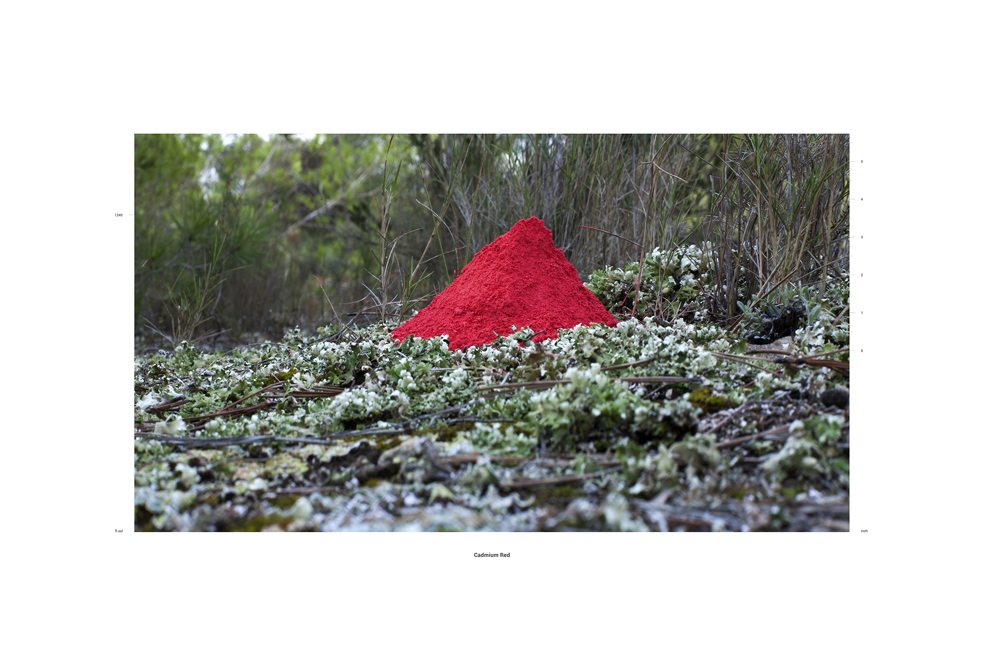
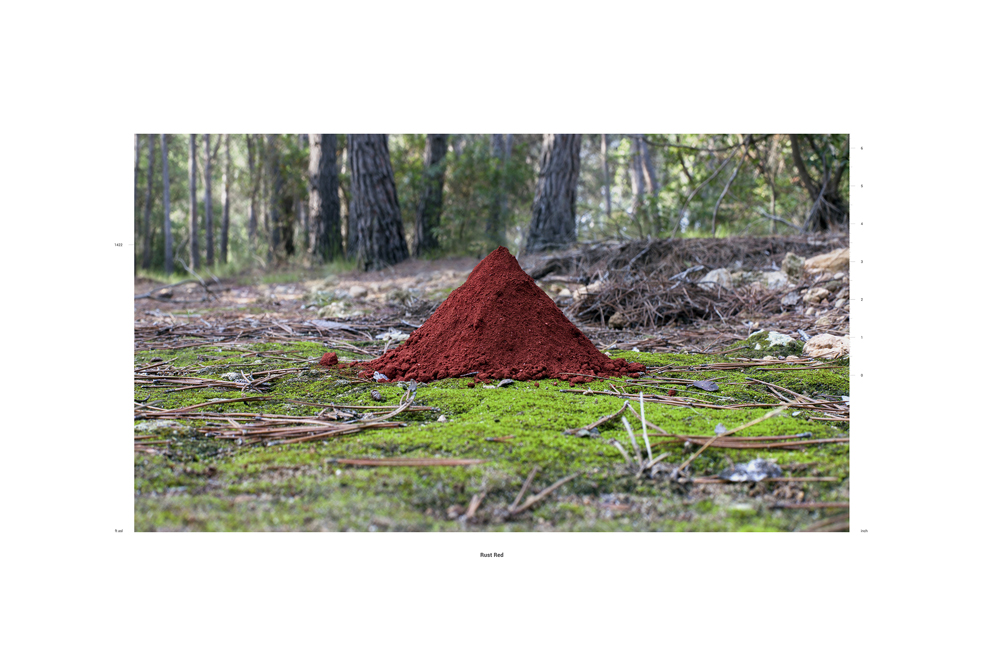
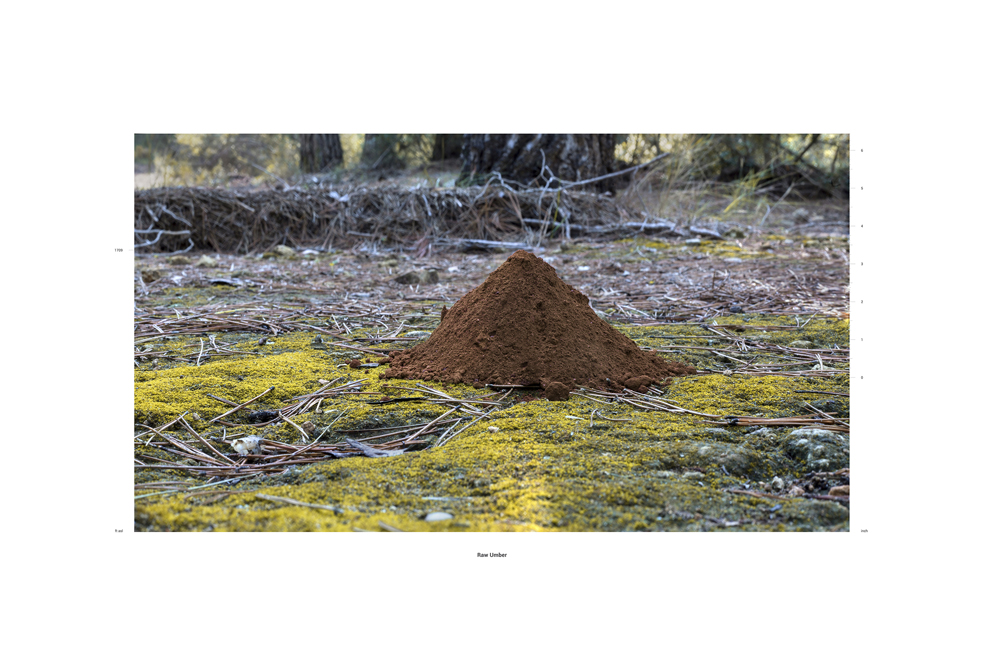
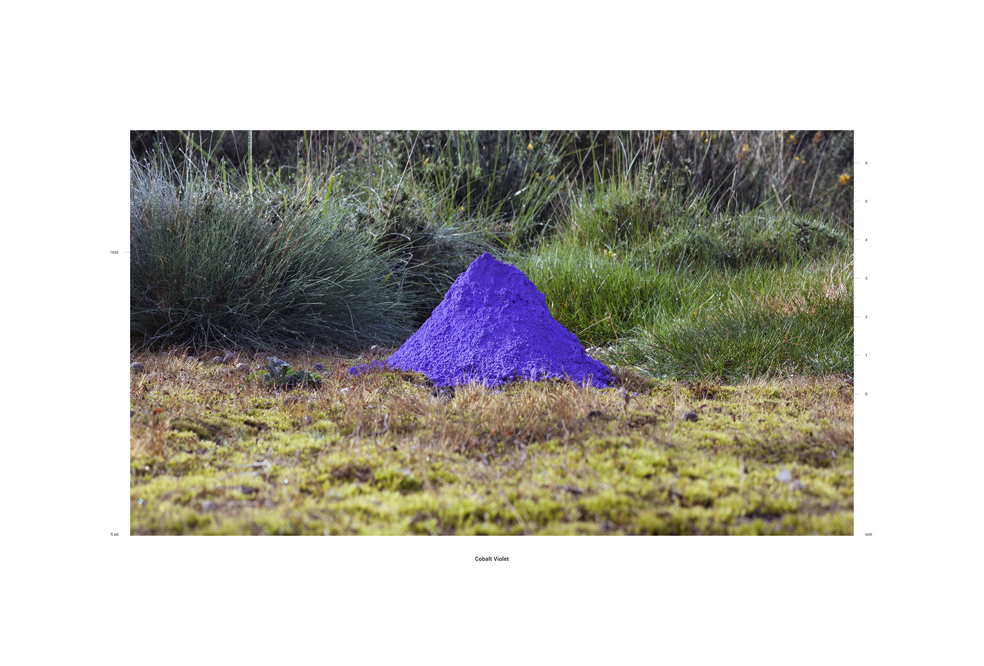
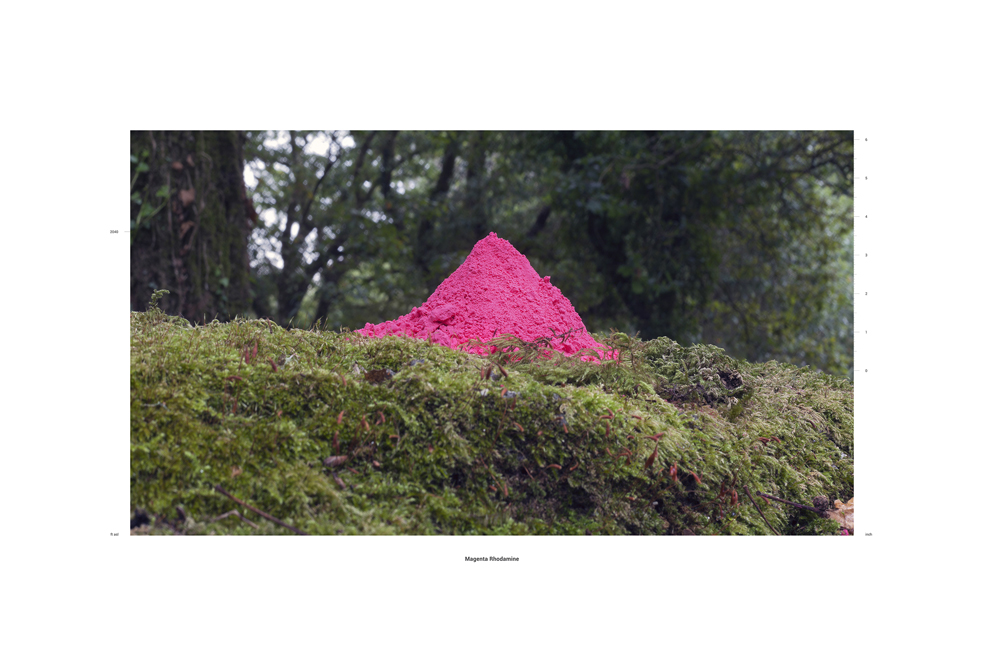
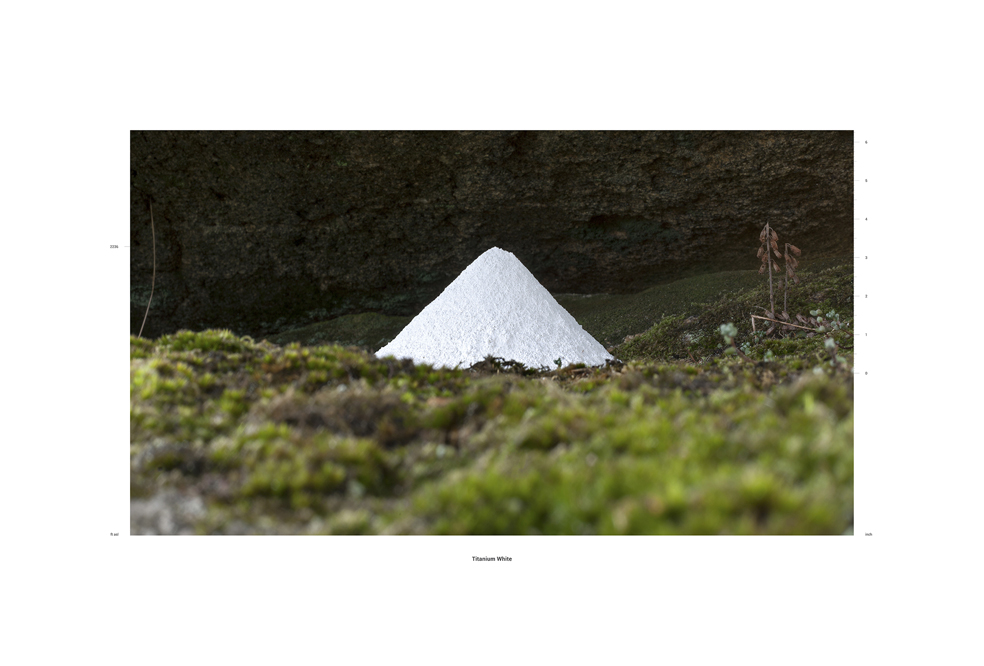
 Series: Enamel on stretcher in landscape
Series: Enamel on stretcher in landscape
image: Series: Enamel on stretcher in landscape, 2014
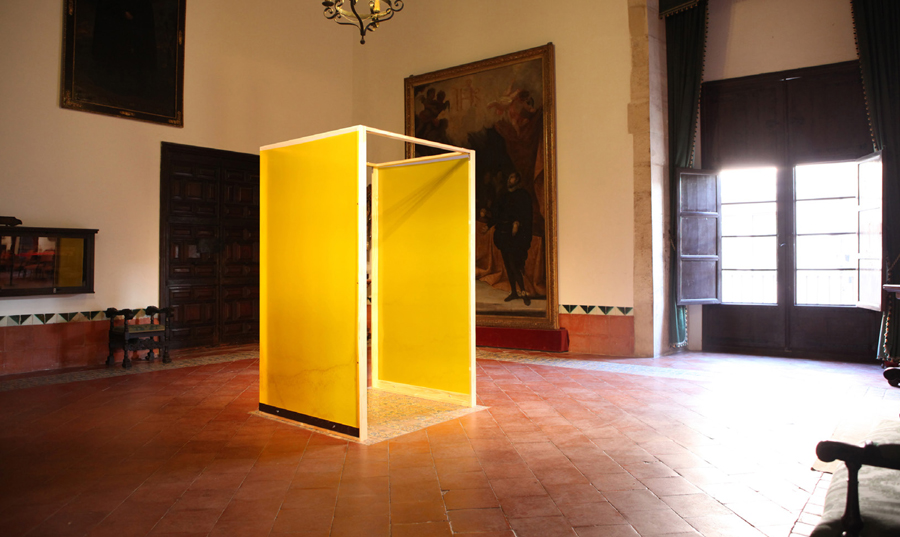 2,63m3 yellow
2,63m3 yellow
image: 2,63m3 yellow
(Dyed paper, wood and iron. 2 x 1,22 x 1,10m., installation at the Ducal Palace of Gandia, Gandia, Spain, 2013)
